
漢德百科全書 | 汉德百科全书

 History
History
 N 2000 - 2100 AD
N 2000 - 2100 AD

 History
History
 M 1500 - 2000 AD
M 1500 - 2000 AD

 History
History
 M 1500 - 2000 AD
M 1500 - 2000 AD

 History
History
 IMF Developed countries
IMF Developed countries
 IMF Developed countries
IMF Developed countries
 TOP2
TOP2
 Japan
Japan

 Party and government
Party and government
 Group of the twenty most important industrial and emerging countries
Group of the twenty most important industrial and emerging countries

 Party and government
Party and government
 Group of Seven,G7
Group of Seven,G7

 States of Asia
States of Asia

Japan (japanisch 日本, Nihon/Nippon; ) (amtlich: Staat Japan 日本国, Nihon-koku/Nippon-koku) ist ein 6852 Inseln umfassender ostasiatischer Staat im Pazifik, der indirekt im Norden an Russland, im Nordwesten an die Volksrepublik China, im Westen an Nordkorea und Südkorea und im Südwesten an die Republik China (Taiwan) grenzt und flächenmäßig der viertgrößte Inselstaat der Welt ist. De-facto-Hauptstadt und größte urbane Siedlung ist Tokio.
Die Bildung des japanischen Staatswesens begann im 5. Jahrhundert unter kulturellem Einfluss des chinesischen Kaiserreichs. Seit dem 16. Jahrhundert stand Japan im Kontakt mit dem Westen und stieg seit dem 19. Jahrhundert zur Großmacht auf, erwarb Kolonien wie Korea und Taiwan, nahm an beiden Weltkriegen teil und beherrschte kurzzeitig große Teile Südost- und Ostasiens. Das Japanische Kaiserreich war bis 1947 eine nach dem monarchischen Prinzip ausgerichtete, zum Teil an preußischem Vorbild angelehnte, konstitutionelle Monarchie mit dem japanischen Kaiser als Staatsoberhaupt. Damit zählte Japan zu einem der weltweit letzten Kaiserreiche. Seine aggressive Expansionspolitik in China im Vorfeld und während des Zweiten Weltkrieges (Pazifikkrieg) führte schließlich zur Niederlage an der Seite der Achsenmächte im August 1945. Im unter Douglas MacArthurs Besatzungsregierung gestalteten japanischen Staat seit 1947 ist der Souverän das Volk, höchstes Organ der Staatsgewalt das Parlament, dessen Kammern seither beide direkt vom Volk gewählt werden. Das Kaisertum wurde nicht abgeschafft, aber der Kaiser als „Symbol des Staates“ auf zeremonielle Aufgaben ohne eigenständige Autorität in Staatsangelegenheiten reduziert.
Japan wird zu den dichter besiedelten Ländern Asiens gezählt und liegt mit 127 Millionen Einwohnern auf Platz elf der bevölkerungsreichsten Länder der Erde. Die japanische Bevölkerung konzentriert sich überwiegend auf die vier Hauptinseln und besteht zu 99 % aus Japanern. Zu den Minderheiten gehören Koreaner, Chinesen und Filipinos. Seit den 2000er Jahren leben in Japan auch mehrere Tausend Gastarbeiter und Asylbewerber aus Afrika und anderen asiatischen Ländern. Die meisten Einwohner sind Anhänger des Shintoismus und Buddhismus.
Als historisch erste Industrienation Asiens hat Japan heute eine sehr hoch entwickelte Volkswirtschaft und war viele Jahre lang die weltweit zweitgrößte Wirtschaftskraft der Welt hinter den Vereinigten Staaten, mit denen es militärisch seit 1952 verbündet ist. Japan ist Mitglied der Gruppe der Sieben größten Industrienationen der Welt und der OECD. Japan nimmt in der Rangfolge gemäß dem Index der menschlichen Entwicklung der Vereinten Nationen den 17. Platz der 187 vom Index berücksichtigten Mitgliedstaaten der Vereinten Nationen ein.
日本国(日语:日本国/にっぽんこく、にほんこく Nippon-koku, Nihon-koku */?),通称日本,是位于东亚的岛屿国家,由日本列岛、琉球群岛和伊豆-小笠原群岛等6,852个岛屿组成[10],面积约37.8万平方公里[11]。国土全境被太平洋及鄂霍次克海、日本海、东海等缘海环抱,西邻朝鲜半岛及俄属远东,东北接千岛群岛,西南面台湾及中国大陆东部。人口达1.26亿[6],居于世界各国第11位,当中逾3,500万人居住于首都东京及周边数县构成的首都圈,为世界最大的都市圈[12]。政体施行议会制君主立宪制,君主天皇为国家与国民的象征,实际的政治权力则由国会、以及内阁总理大臣(首相)所领导的内阁掌管[13]。
传说日本于公元前660年2月11日建国[14],在公元4世纪出现首个统一政权,并于大化改新中确立了天皇的中央集权体制,文化上则深受中国隋唐两代之影响。12世纪后的六百年间,日本由幕府等数个武士阶级政权实际统治,期间包括了政治纷乱的南北朝与战国时代。17世纪起江户幕府颁布锁国令,至1854年被黑船迫以开港才结束。此后,日本在西方列强进逼的时局下,首先天皇从幕府手中收回政治实权,接着在19世纪中期的明治维新进行大规模政治与经济改革,引入欧洲的科学与技艺,日本的社会于是实现了工业化及现代化,施行天皇专权的君主立宪制,将北海道正式纳为领土;而自19世纪末起,日本开始进行对外扩张,首先并吞琉球,之后将台湾、朝鲜、库页岛等地纳为殖民地。进入20世纪时,日本已成为当时各国承认的帝国主义列强之一,也是当时东方世界唯一的大国。日本后来成为第二次世界大战的轴心国之一,但最终于1945年投降。败战后,日本在盟军主导下转型为以国会为中心的民主政体,天皇地位虚位化[13],同时依据新宪法放弃发动战争的权利,仅维持防御性的武装力量。
日本是世界第三大经济体,亦为七国集团成员,是世界先进国家之一,主要奠基于日本经济在二战后的巨幅增长。现时日本的科研能力、工业基础和制造业技术均位居世界前茅[15],并是世界第4大出口国和进口国[16]。2018年,日本的人均国内生产总值依国际汇率可兑换成为四万零八百美元,人均国民收入则在四万四千四百美元左右,人类发展指数亦在最高组群行列[17]。
日本国(にほんこく、にっぽんこく)、または日本(にほん、にっぽん)は、東アジアに位置する日本列島(北海道・本州・四国・九州の主要四島およびそれに付随する島々)及び、南西諸島・伊豆諸島・小笠原諸島などから成る島国[1][2]。議会制民主主義国家である。首都は東京都。 「日本」という漢字による国号の表記は、日本列島が中国大陸から見て東の果て、つまり「日の本(ひのもと)」に位置することに由来するのではないかとされる[3]。近代の二つの憲法の表題は、「日本国憲法」および「大日本帝国憲法」であるが、国号を「日本国」または「日本」と直接かつ明確に規定した法令は存在しない。[疑問点]ただし、日本工業規格 (Japanese Industrial Standard) では日本国、英語表記をJapanと規定。更に、国際規格 (ISO) では3文字略号をJPN、2文字略号をJPと規定している。また、日本国外務省から発給される旅券の表紙には「日本国」の表記と十六一重表菊[4] を提示している。法令で日本を指し示す表記には統一されておらず日本、日本国、本邦、わが国、などが混在している。
日本では、大和政権が統一以降に自国を「ヤマト」と称していたようであるが、古くから中国や朝鮮は日本を「倭」と呼んできた。石上神宮の七支刀の銘や、中国の歴史書(『前漢書』『三国志』『後漢書』『宋書』『隋書』など)や、高句麗の広開土王の碑文も、すべて倭、倭国、倭人、倭王、倭賊などと記している。そこで大和の代表者も、外交時には(5世紀の「倭の五王」のように)国書に「倭国王」と記すようになった[46]。
しかし中国との国交が約120年に渡って中絶した後、7世紀初期に再開された時には、『日本書紀』では「東の天皇が敬いて西の皇帝に白す」、『隋書』には「日出ずる処の天子、書を日没する処の天子に致す。恙無しや」とする国書を日本側が渡した記述があり、従来のように倭と称する事を避けている。中国側では『旧唐書』の「東夷伝」に初めて日本の名称が登場し、「日本国は倭国の別種なり。其の国、日の辺に在るを以ての故に、日本を以て名と為す」「或いは曰く、倭国自ら其の名の雅ならざるを悪(にく)み、改めて日本と為す」「或いは曰く、日本は旧(もと)小国、倭国の地を併す」のように、倭が名称を日本に変えた理由を説明している[47]。また、『新唐書』においては「国日出ずる所に近し、以に名をなす」とあり、隋書の「日出処天子」と共通している。
この7世紀には、遣隋使に続いて遣唐使がしばしば派遣されているが、いつから「倭」に変えて「日本」を国号と変えたのかは明らかでない[48]。使者の毎回の交渉について詳しく記述している『日本書紀』も、8世紀に国号としての日本が確立した後の書物であり、原資料にあった可能性のある「倭」の字を、国号に関する限りすべて「日本」と改めている。それ以外の文献では、733年(天平5年)に書かれた『海外国記』の逸文で、664年(天智3年)に太宰府へ来た唐の使者に「日本鎮西筑紫大将軍牒」とある書を与えたというが、真偽は不明である。結局確かなのは『続日本紀』における記述であり、702年(大宝2年)に32年ぶりで唐を訪れた遣唐使は、唐側が「大倭国」の使者として扱ったのに対し、「日本国使」と主張したという。『旧唐書』の「東夷伝」の記事も、この日本側の説明に基づいているようである[49]。
Japan (Japanese: 日本; Nippon [ɲippoɴ] or Nihon [ɲihoɴ]; formally 日本国 ![]() Nippon-koku or Nihon-koku, lit. "State of Japan") is an island country in East Asia. Located in the Pacific Ocean, it lies off the eastern coast of the Asian continent and stretches from the Sea of Okhotsk in the north to the East China Sea and the Philippine Sea in the south.
Nippon-koku or Nihon-koku, lit. "State of Japan") is an island country in East Asia. Located in the Pacific Ocean, it lies off the eastern coast of the Asian continent and stretches from the Sea of Okhotsk in the north to the East China Sea and the Philippine Sea in the south.
The kanji that make up Japan's name mean "sun origin", and it is often called the "Land of the Rising Sun". Japan is a stratovolcanic archipelago consisting of about 6,852 islands. The four largest are Honshu, Hokkaido, Kyushu, and Shikoku, which make up about ninety-seven percent of Japan's land area and often are referred to as home islands. The country is divided into 47 prefectures in eight regions, with Hokkaido being the northernmost prefecture and Okinawa being the southernmost one. The population of 127 million is the world's tenth largest, of which 98.5% are ethnic Japanese. 90.7% of people live in cities, while 9.3% live in the countryside.[16] About 13.8 million people live in Tokyo,[17] the capital of Japan. The Greater Tokyo Area is the most populous metropolitan area in the world with over 38 million people.[18]
Archaeological research indicates that Japan was inhabited as early as the Upper Paleolithic period. The first written mention of Japan is in Chinese history texts from the 1st century AD. Influence from other regions, mainly China, followed by periods of isolation, particularly from Western Europe, has characterized Japan's history.
From the 12th century until 1868, Japan was ruled by successive feudal military shōguns who ruled in the name of the Emperor. Japan entered into a long period of isolation in the early 17th century, which was ended in 1853 when a United States fleet pressured Japan to open to the West. After nearly two decades of internal conflict and insurrection, the Imperial Court regained its political power in 1868 through the help of several clans from Chōshū and Satsuma – and the Empire of Japan was established. In the late 19th and early 20th centuries, victories in the First Sino-Japanese War, the Russo-Japanese War and World War I allowed Japan to expand its empire during a period of increasing militarism. The Second Sino-Japanese War of 1937 expanded into part of World War II in 1941, which came to an end in 1945 following the Japanese surrender. Since adopting its revised constitution on May 3, 1947, during the occupation led by SCAP, the sovereign state of Japan has maintained a unitary parliamentary constitutional monarchy with an Emperor and an elected legislature called the National Diet.
Japan is a member of the ASEAN Plus mechanism, UN, the OECD, the G7, the G8, and the G20, and is considered a great power.[19][20][21] Its economy is the world's third-largest by nominal GDP and the fourth-largest by purchasing power parity. It is also the world's fourth-largest exporter and fourth-largest importer.
Japan benefits from a highly skilled and educated workforce; it has among the world's largest proportion of citizens holding a tertiary education degree.[22] Although it has officially renounced its right to declare war, Japan maintains a modern military with the world's eighth-largest military budget,[23] used for self-defense and peacekeeping roles; it ranked as the world's fourth most-powerful military in 2015.[24] Japan is a highly developed country with a very high standard of living and Human Development Index. Its population enjoys the highest life expectancy and third lowest infant mortality rate in the world, but is experiencing issues due to an aging population and low birthrate. Japan is renowned for its historical and extensive cinema, influential music industry, anime, video gaming, rich cuisine and its major contributions to science and modern technology.[25][26]
Le Japon, en forme longue l’État du Japon, en japonais Nihon ou Nippon (日本) et Nihon-koku ou Nippon-koku (日本国) respectivement, est un pays insulaire de l’Asie de l’Est, situé entre l’océan Pacifique et la mer du Japon, à l’est de la Chine, de la Corée et de la Russie, et au nord de Taïwan. Étymologiquement, les kanjis (caractères chinois) qui composent le nom du Japon signifient « pays (国, kuni) d’origine (本, hon) du Soleil (日, ni) » ; c’est ainsi que le Japon est désigné comme le « pays du soleil levant ».
Le Japon forme, depuis 1945, un archipel de 6 852 îles de plus de 100 m2, dont les quatre plus grandes sont Hokkaidō, Honshū, Shikoku, et Kyūshū représentant à elles seules 95 % de la superficie terrestre du pays. L’archipel s’étend sur plus de trois mille kilomètres. La plupart des îles sont montagneuses, parfois volcaniques ; par exemple, le plus haut sommet du Japon, le mont Fuji (3 776 m), est un volcan (inactif depuis 1707). Le Japon est le douzième pays le plus peuplé du monde, avec environ 127 millions d’habitants pour 377 488 km2 (337 hab./km2), dont l'essentiel est concentré sur les étroites plaines littorales du sud d'Honshū et du nord de Shikoku et Kyūshū, formant un ensemble pratiquement urbanisé en continu appelé « Mégalopole japonaise » ou « Taiheiyō Belt » (太平洋ベルト, Taiheiyō beruto, littéralement « ceinture Pacifique »). Le Grand Tokyo, qui comprend la capitale Tokyo et plusieurs préfectures environnantes, est la plus grande région métropolitaine du monde, avec plus de 35 millions d’habitants. La ville a été première place financière mondiale en 1990.
Les recherches archéologiques démontrent que le Japon était peuplé dès la période du Paléolithique supérieur. Les premières mentions écrites du Japon sont de brèves apparitions dans des textes de l’histoire chinoise du Ier siècle. L’histoire du Japon est caractérisée par des périodes de grande influence dans le monde extérieur suivies par de longues périodes d’isolement. Depuis l’adoption de sa constitution en 1947, le Japon a maintenu une monarchie constitutionnelle avec un empereur et un parlement élu, la Diète.
Le Japon est la troisième puissance économique du monde pour le PIB nominal et la quatrième pour le PIB à parité de pouvoir d’achat. Il est aussi le quatrième pays exportateur et le sixième pays importateur au monde. Acteur majeur du commerce international et puissance épargnante, il a ainsi accumulé une position créancière nette vis-a-vis du reste du monde (en) de plus de 325 000 milliards de yens4, le plaçant en première position devant la Chine5. C’est un pays développé, avec un niveau de vie très élevé (dix-septième IDH le plus élevé) et la plus longue espérance de vie au monde selon les estimations de l’ONU6. Mais ce tableau idyllique ne doit pas masquer d’importants problèmes qui pèsent sur l’avenir du pays : le Japon souffre d’un des taux de natalité les plus bas du monde, très en dessous du seuil de renouvellement des générations7. Le pays est actuellement en déclin démographique8. C’est également le pays pour lequel le poids de la dette publique brute est le plus important au monde9, cette dernière s’élève en 2014 à 233 % du PIB10.
Il Giappone (AFI: [ʤapˈpoːne][6][7]; in giapponese 日本 Nihon? o Nippon?, ufficialmente 日本国 Nihon-koku? o Nippon-koku?) è uno Stato insulare dell'Asia orientale.
Situato nell'oceano Pacifico, il Giappone si trova a est del mar del Giappone, Cina, Corea del Nord, Corea del Sud e Russia. Si sviluppa nell'area compresa tra il mare di Ochotsk nel nord, fino al mar Cinese Orientale e Taiwan nel sud. Il Giappone è un arcipelago composto da 6.852 isole, le cui quattro isole più grandi sono: Honshū, Hokkaidō, Kyūshū e Shikoku (tutte e quattro collegate tramite ponti o tunnel sottomarini), che da sole rappresentano circa il 97% della superficie terrestre del Giappone. Molte isole sono montagne, alcune di origine vulcanica e la vetta più alta del Giappone è il Monte Fuji, un vulcano attivo.&
 *Political system of Japan
*Political system of Japan

 History
History
 I 500 - 0 BC
I 500 - 0 BC

 History
History
 J 0 - 500 AD
J 0 - 500 AD

 History
History
 K 500 - 1000 AD
K 500 - 1000 AD

 History
History
 L 1000 - 1500 AD
L 1000 - 1500 AD

 History
History
 M 1500 - 2000 AD
M 1500 - 2000 AD

 History
History
 N 2000 - 2100 AD
N 2000 - 2100 AD
 Japan
Japan
 Japanese history
Japanese history

Tennō (jap. 天皇 „Himmlischer Herrscher“), eingedeutscht Tenno, ist ein japanischer Herrscher- und Adelstitel, der im Deutschen oft mit „Kaiser“ übersetzt wird, sowie in loserer Verwendung auch die Bezeichnung für das dynastische Geschlecht, das in Japan diesen Titel getragen hat. Am 30. April 2019 dankte Akihito als 125. Tennō ab, blieb jedoch bis Mitternacht formal im Amt.[1] Die Nachfolge trat dessen Sohn Naruhito als 126. Tennō an.
Ursprünglich wurde der Herrscher von Wa bzw. Yamato, wie Japan damals genannt wurde, im Land als „Großkönig“ (大王, Ōkimi) tituliert bzw. von oder nach außen (China und Korea) als „König von/der Wa“ (倭王), „König des Landes (der) Wa“ (倭国王) oder „König von Groß-Wa [= Yamato]“ (大倭王). Weitere Bezeichnungen waren suberagi, sumeragi, sumerogi, sumera-mikoto oder sumemima no mikoto. Die ersten drei sind dabei nur lautliche Varianten eines Begriffs, dessen Bedeutung unklar ist, wobei das gi wohl ein männliches Suffix (vgl. Izana-gi und Izana-mi) und mikoto ein Ehrentitel ist.
Der Kaisertitel 天皇 (chin. tiānhuáng, jap. tennō) selbst stammt aus China, wo er kurzzeitig vom Tang-Kaiser Gaozong (reg. 649–683) und seiner Nachfolgerin – der einzigen Kaiserin Chinas – Wu Zetian (reg. 684/690–705) benutzt wurde. Von letzterer vermutlich auch, weil er im Gegensatz zum traditionellen Kaisertitel Huangdi (chinesisch 皇帝) keine Geschlechtskonnotation barg. In Japan wurde der Titel erstmals von Temmu (reg. 672–686) verwendet und dann regelmäßig von seiner Nachfolgerin Jitō (686–697). Die von Temmus Sohn Toneri im Jahre 720 herausgegebene Geschichtschronik Nihonshoki wandte diesen Begriff auch auf alle Vorgänger an.[2] Dieselben Schriftzeichen wurden dann auch mit der alternativen Aussprache sumeragi versehen.
Später kam der Titel Mikado (御門, „erlauchtes Tor“) hinzu, der sich eigentlich auf den kaiserlichen Palast bezog und damit indirekt auf den Kaiser verwies, analog dem Titel Hohe Pforte im Osmanischen Reich. Daher wurde der Titel Mikado auch als 帝 geschrieben, mit dem auch die chinesischen Kaiser bezeichnet werden und das ursprünglich die Bedeutung „Gottheit“, übertragen also „Gottkaiser“, hatte. Ähnliche weitere Titel des Tennō waren Dairi (内裏, „inneres Inneres“) und Kinri (禁裏, „verbotenes Inneres“), die sich auf das Innerste des Palastes bezogen.
Zu Beginn seiner Amtszeit erlässt der Tennō eine Regierungsdevise (nengō), die sich nur aus jeweils 2 von ausgewählten 216 Schriftzeichen zusammensetzen darf. Sie dient offiziell seit 1874 zugleich als Ärabezeichnung – vor der Meiji-Restauration 1868 wurden die Nengō auch durch Shōgune und Prinzregenten verkündet, gewöhnlich nach bedeutenden Natur- oder politischen Ereignissen oder auf Basis astrologischer Erwägungen, und auch während der Amtsperiode eines Tennō geändert. Bis zu seinem Tod trägt der Tennō seinen nach seiner Geburt erhaltenen Eigennamen, wird jedoch von Japanern (außer vielleicht innerhalb seiner Familie) niemals so angeredet oder bezeichnet, sondern tennō heika (kaiserliche Majestät) angesprochen oder kinjō tennō (der gegenwärtige Tennō) genannt. Nach seinem Tod wird er nur noch mit seinem Regierungsmotto, das zugleich den „Totennamen“ bildet, und dem Suffix -tennō bezeichnet. So lautet der Name des 1989 verstorbenen Kaisers Hirohito heute „Shōwa-tennō“, abgeleitet aus der Bezeichnung seiner Amtsperiode, „Shōwa-jidai“, (dt. „Ära des erleuchteten Friedens“).
Sitz des Kaisers und der kaiserlichen Familie ist der Kōkyo im Zentrum Tokios.
天皇(日语:天皇/てんのう tennō */?)是日本的君主,为当今世界唯一使用皇帝名号的国家元首,以其为首的日本皇室则是世界上现存最古老的君主家庭。在明治维新至1947年期间施行的《大日本帝国宪法》明文规定天皇为日本的国家元首[2];之后接续施行至今的《日本国宪法》则定义其为“日本国以及日本国民整体的象征”,为“有实无名”的虚位元首。主要职责是任命首相、批准国务大臣的任免、签署法律和命令、以及进行礼仪性的外交事务等。
天皇族系号称“万世一系”,从首任的神武天皇(传说公元前660年登基)以来一脉相传,并不像中国、朝鲜、越南等周边国家经历过改朝换代,这是由于天皇在日本历史上能掌握实权的时间很短,反而能避过战乱,使皇室更加长寿。
在神道信仰的传统中,天皇被认为是天照大神的后裔,故具有“神性”,由此天皇与整个皇室在日本古代被认为是超乎普通人的存在,因此时至今日都没有姓氏(历史学研究上称其为天皇氏或天皇家)。另外,日本传统上视天皇为神道的最高祭司,所以天皇必须信奉神道信仰,[来源请求]。二战后,昭和天皇发表《人间宣言》,放弃天皇被赋予的神性。
通常,现任天皇被称为“今上天皇”,敬称“陛下”。退位后的天皇尊为“太上天皇”(简称上皇);若其退位后出家则尊为“太上法皇”(简称法皇)。第125代天皇明仁于2019年生前退位时,则首开先例不采用“太上天皇”尊号,改封新尊号为“上皇”,以避免让外界联想起日本历史上的院政。至于天皇驾崩时,将先被称为“大行天皇”,之后再正式讳称为“○○天皇”;明治时代实施一世一元制后,天皇的讳称改为直接采用在世时的元号,例如明治天皇。
天皇(てんのう、英:Emperor[要出典])は、日本国憲法に規定された日本国および日本国民統合の象徴たる地位、または当該地位にある個人[4][5][6]。7世紀頃に大王が用いた称号に始まり、歴史的な権能の変遷を経て現在に至っている[6]。在位中の天皇は、上皇明仁第1皇子である徳仁(今上天皇)。
「てんのう」は、「てんおう」の連声(れんじょう)とされる[7][8]。古代の日本では、ヤマト王権の首長を「大王」(オオキミ)といったが、天武朝ごろから中央集権国家の君主として「天皇」が用いられるようになった[8]。「天皇」は大和朝廷時代の大王が用いた称号であり、奈良時代から平安時代にかけて政治・祭祀の頂点だったが、摂関政治・院政・武家の台頭により政治的実権を失っていった[7]。室町時代には多くの宮中祭祀の廃絶もあり劣位となったが、「江戸時代末に尊王論が盛んとなり、王政復古、明治憲法における天皇制へとつながった」といわれる[7]。
大日本帝国憲法では、国家元首であって、神聖不可侵であり、かつ統治権を総攬[注釈 3]するものとして規定されていた[4][7][8]。大日本帝国時代に天皇は
といった類の呼称をされており、こうした天皇を全世界・全宇宙の頂点とする価値観は
とのように呼称されていた[10]。(詳細は天皇#一神教・国家神道を参照。)「皇帝」と「天皇」は併用されていたが、1936年(昭和11年)には「天皇」に統一された[4]。
君主とは伝統的に、国家で特定の一人が主権を持つ場合のその主権者であり[11]、王・帝王・天子・皇帝・きみなどとも言われる[12]。『日本大百科全書』は、天皇は通常の立憲君主の権限は無いとし、『法律用語辞典(第4版)』は、象徴天皇と元首天皇を別としている[13]。また『国史大辞典』は法制上、象徴天皇は君主ではないとしている[14]。
大日本帝国憲法では第4条で「天皇ハ国ノ元首ニシテ統治権ヲ総攬(そうらん)」するとの明記があったが、現行の日本国憲法には元首の規定はなく、そのため元首について様々な見解がある[15]。象徴天皇を元首とする説、実質的機能を重視し内閣(または首相)を元首とする説、元首は不在とする説等がある[16]。学説の大多数は、条約締結や外交使節任免および外交関係処理の権限をもつ内閣を元首とするか、内閣を代表する内閣総理大臣を元首としている[17]。内閣法制局は「日本国憲法においては天皇を元首であるといっても差し支えない」「天皇は限定された意味で、国家元首である」とする一方、最終的には定義によるとしている。
『世界大百科事典』によると、日本国憲法によって主権者は国民となり、「天皇は主権者の一員でもない」とされている[18]。「象徴規定にはとくに法的意味はなく、また国民を統合する機能は憲法上天皇には期待されていない」という[18]。天皇へ認可された権能は極めて限定されており、「行政権ももたず国を対外的に代表することもない天皇を君主とか元首とみることは困難」とされる[18]。天皇の地位は主権者である国民の総意に基づいており(第1条)、「国民の総意によって天皇制度を改廃することが可能」となっている[18]。「神勅主義は明確に否定されているので、神秘的・宗教的要素がここに介入する余地は皆無」であり、天皇は公的な宗教的活動が禁止されている(第20条)こともあって、「天皇、国家の世俗化が要求されている」[18]。「神道が特別な地位を与えられることはもはや許されない」のであり、皇位継承の際に行われた大嘗祭や三種の神器の継承は、「天皇家の私事としてのみありうる」とされる[18]。 天皇は憲法が限定的に列挙している国事行為だけを行い、国政に関する権能は一切持たない(第4条、第6条 - 第7条)[18]。国事行為は国家意思形成に関わらない形式的・儀礼的行為であり、天皇が国事行為を行うには常に内閣の助言と承認が必要であって、内閣は自らの助言と承認に責任を負う(第3条)[18]。天皇は国事行為の責任を負わないが、民事責任は負っている[18]。天皇の刑事責任を免責する明文規定は無いが、摂政はその在任中は訴追されないと定める皇室典範21条から、天皇もその在位中は訴追されないとの類推がある[18]。
The Emperor of Japan is the head of the Imperial Family and the head of state of Japan. Under the 1947 constitution, he is defined as "the symbol of the State and of the unity of the people." Historically, he is also the highest authority of the Shinto religion. In Japanese, the emperor is called Tennō (天皇), literally "heavenly sovereign". In English, the use of the term Mikado (帝 or 御門) for the emperor was once common, but is now considered obsolete.[1]
Currently, the Emperor of Japan is the only head of state in the world with the English title of "emperor". The Imperial House of Japan is the oldest continuing monarchical house in the world.[2] The historical origins of the emperors lie in the late Kofun period of the 3rd–7th centuries AD, but according to the traditional account of the Kojiki (finished 712) and Nihon Shoki (finished 720), Japan was founded in 660 BC by Emperor Jimmu, who was said to be a direct descendant of the sun-goddess Amaterasu.[3][4] The current emperor is Naruhito. He acceded to the Chrysanthemum Throne upon the abdication of his father, the now-Emperor Emeritus Akihito on 1 May 2019 at 00:00 local time (15:00 UTC).
The role of the Emperor of Japan has historically alternated between a largely ceremonial symbolic role and that of an actual imperial ruler. Since the establishment of the first shogunate in 1199, the emperors have rarely taken on a role as supreme battlefield commander, unlike many Western monarchs. Japanese emperors have nearly always been controlled by external political forces, to varying degrees. For example, between 1192 and 1867, the shōguns, or their shikken regents in Kamakura (1203–1333), were the de facto rulers of Japan, although they were nominally appointed by the emperor. After the Meiji Restoration in 1867, the emperor was the embodiment of all sovereign power in the realm, as enshrined in the Meiji Constitution of 1889. Since the enactment of the 1947 Constitution, the role of emperor has been to act as a ceremonial head of state without even nominal political powers.
Since the mid-nineteenth century, the Imperial Palace has been called Kyūjō (宮城), later Kōkyo (皇居), and is on the former site of Edo Castle in the heart of Tokyo (the current capital of Japan). Earlier, emperors resided in Kyoto (the ancient capital) for nearly eleven centuries. The Emperor's Birthday (currently 23 February) is a national holiday.
L'empereur du Japon (天皇, Tennō) est le chef de l'État japonais de facto. Selon la Constitution promulguée en 1947 lors de l'occupation ayant suivi la Seconde Guerre mondiale, il a en réalité un rôle uniquement symbolique et détient sa fonction du peuple japonais.
L'empereur actuel, Naruhito, est l'héritier d’une succession que la tradition présente comme ininterrompue et que la légende fait commencer en 660 av. J.C. avec l’empereur Jinmu, qui descend de la déesse du Soleil Amaterasu, elle-même fille des dieux démiurges créateurs du monde terrestre (l'archipel japonais) : Izanagi et Izanami.
Pour les partisans du culte impérial, dont l'influence fut prédominante lors de l'expansion de l'ère Shōwa, l'empereur avait un statut divin, symbolisé par les insignes impériaux. Ce statut a fait l'objet d'une remise en question lors de l'occupation du pays par les forces américaines, ces dernières obligeant en conséquence Hirohito à renoncer officiellement, en janvier 1946, à sa nature de « divinité incarnée » (akitsumikami) sans toutefois renoncer à son ascendance divine.
La liste officielle actuelle comprend 126 souverains (dont Naruhito), parmi lesquels on trouve 8 impératrices (dont 2 régnèrent sous deux noms différents).
Le pouvoir impérial a souvent été usurpé de fait par des chefs de familles puissantes, dont les mieux connus sont les shoguns. Pour échapper aux pressions et conserver leur pouvoir, certains empereurs « retirés » affectèrent de laisser le trône à des membres de leur famille, tout en exerçant leur contrôle depuis les coulisses.
Après avoir résidé plusieurs siècles au Kyōto-gosho à Kyoto, les empereurs se sont installés au milieu du XIXe siècle dans l’ancien château d'Edo (Tokyo), devenu Palais impérial : Kyūjō (宮城) ou Kōkyo (皇居). L'Agence impériale (宮内庁, kunaichō), située sur le domaine du Kōkyo, gère presque tout ce qui concerne l’empereur et sa famille : service du palais et menus, santé, sécurité, déplacements et emploi du temps officiel.
Secondo la Costituzione del Giappone, l'Imperatore (天皇 tennō?, letteralmente "sovrano celeste") è il simbolo della nazione giapponese e dell'unità del suo popolo. È a capo della famiglia imperiale del Giappone. Secondo l'attuale costituzione, l'imperatore è una figura simbolica e cerimoniale della monarchia costituzionale ed è ad oggi l'unico imperatore in carica al mondo. L'attuale sovrano è Naruhito, salito al trono del crisantemo il 1º maggio 2019 dopo l'abdicazione del padre, l'Imperatore Akihito.
Il ruolo dell'imperatore del Giappone ha sempre oscillato tra quello di un capo religioso di alto grado, con grandi poteri simbolici, e quello di autentico regnante imperiale. È esistito un autentico culto imperiale (l'Arahitogami) che vedeva l'imperatore come discendente delle divinità. Il termine tennō, sovrano celeste, che venne adottato per la prima volta nel VII secolo, era già in uso nel paese prima di tale adozione, e veniva usato per definire i Quattro Re Celesti (四天王 Shitennō?), i leggendari guardiani del mondo nella tradizione induista e buddhista.
El emperador de Japón (天皇 tennō?, lit., «soberano celestial») es el jefe de Estado y es el símbolo constitucionalmente reconocido de la nación japonesa y de la unidad de su pueblo. Es la cabeza de la familia imperial japonesa, la familia real del Japón.
El papel del emperador de Japón oscilaba hasta mediados del siglo XX entre un clérigo de alto rango con grandes poderes simbólicos y un auténtico gobernante imperial. Ha existido un culto imperial (Arahitogami) que considera al tennō como sumo sacerdote mediador entre los hombres y la divinidad, debido a sus cercanos lazos con los dioses japoneses (lazos de herencia). La violencia y las operaciones militares han sido considerados incompatibles con el papel del tennō al menos durante 14 siglos: por ello los monarcas japoneses no han actuado como comandantes militares, al contrario de lo habitual en Occidente. La principal función del emperador durante la mayor parte de los últimos mil años habitualmente ha sido la de simplemente autorizar u otorgar legitimidad a aquellos situados en el poder.
Bajo la Constitución moderna de Japón, el emperador se ha convertido en una figura ceremonial y simbólica con funciones similares a las de un jefe de Estado en una monarquía constitucional (ver Política de Japón). Sin embargo, ni la constitución japonesa ni ninguna otra norma atribuyen expresamente al emperador la titularidad de la jefatura del Estado.
El actual emperador, Su Majestad Imperial, es Naruhito, desde 2019, vitalicio.
La residencia del emperador japonés es el palacio de Kōkyo, localizado en el centro de Tokio, desde mediados del siglo XIX es la residencia oficial del emperador. Anteriormente los emperadores residían en Kioto.
Ciertos datos y fechas referentes a la institución imperial son objeto de discusión entre los historiadores japoneses. Muchos emperadores citados en la lista de emperadores de Japón murieron a una edad muy temprana y difícilmente se puede considerar que hubieran "gobernado" de verdad. Otros fueron eclipsados por sus predecesores, los cuales se habían retirado aparentemente a un monasterio pero continuaron ejerciendo su influencia, en un proceso llamado "reinado enclaustrado". De todos modos, es importante mantener la lista oficial entera, porque incluso hoy día la forma habitual de datación en la historia japonesa es por los reinados de los emperadores.
Импера́тор Япо́нии (яп. 天皇 Тэнно:[1], Тен-о[1]) — символ государства и единства нации Японии, исполняющий функции формального главы государства. В условиях конституционной монархии выполняет преимущественно представительские функции, имея намного меньше полномочий, чем, например, британский монарх. Реальной властью обладает глава кабинета министров — премьер-министр Японии. Титул императора передаётся по мужской линии.
Царствовавший с 7 января 1989 года император Акихито 30 апреля 2019 года отрёкся от престола[2]. C 1 мая 2019 года императором стал Нарухито.

 Financial
Financial
 ***Global Financial Center
***Global Financial Center

 Geography
Geography

 Geography
Geography
 *World's Most Livable Cities
*World's Most Livable Cities

 History
History
 M 1500 - 2000 AD
M 1500 - 2000 AD

 History
History
 N 2000 - 2100 AD
N 2000 - 2100 AD
 Switzerland
Switzerland
 Genf
Genf

Genf (schweizerdeutsch Gämf, Gänf, Genf; französisch Genève [ʒənɛv, ʒnɛv]; frankoprovenzalisch Geneva [ðəˈnɛva, ˈzɛnəva]; italienisch Ginevra; rätoromanisch  Genevra?/i) ist eine Stadt und politische Gemeinde sowie der Hauptort des Kantons Genf in der Schweiz.
Genevra?/i) ist eine Stadt und politische Gemeinde sowie der Hauptort des Kantons Genf in der Schweiz.
Die Stadt liegt am südwestlichen Zipfel der französischen Schweiz (Romandie) in der Genferseeregion am Ausfluss der Rhone aus dem Genfersee. Mit ihren 203'951 Einwohnern (31. Dezember 2019) ist Genf nach Zürich die zweitgrösste Stadt der Schweiz.[5] 47,9 Prozent[6] der Einwohner verfügen nicht über das Schweizer Bürgerrecht, womit Genf neben Basel und Lausanne zu den Schweizer Städten mit sehr hohem Ausländeranteil zählt.[7] Die statistische Bevölkerungsdichte hat mit 12'835 Einwohnern pro Quadratkilometer einen äusserst hohen Wert für Schweizer Verhältnisse. Die 1,2 Millionen Einwohner zählende Metropolregion Genf-Lausanne ist ein erweiterter Ballungsraum und ist der bedeutendste der französischen Schweiz.
Die Stadt Genf beheimatet neben New York City weltweit die meisten internationalen Organisationen, darunter UNO, CERN, IKRK, WHO, IAO, IOM, ISO, IEC, ITU, WIPO, WMO, WOSM und WTO. Zusammen mit Basel (Bank für Internationalen Zahlungsausgleich), New York City (UNO-Hauptquartier) und Strassburg (Europarat) zählt Genf zu den wenigen Städten der Welt, die als Sitz einer der gemeinhin als wichtigsten erachteten internationalen Organisationen fungieren, ohne die Hauptstadt eines Staates zu sein.[8] Zudem sind hier 175 Staaten diplomatisch vertreten, so unterhalten einige die diplomatische Repräsentanz in der Schweiz nicht in der Bundesstadt Bern, sondern in Genf.
Genf ist nach Zürich der zweitgrösste Finanzplatz der Schweiz, gefolgt von Lugano. In einer Rangliste der wichtigsten Finanzzentren weltweit belegt Genf im Jahr 2018 den 26. Platz.[9]
Seit Jahren wird Genf neben Zürich und Basel als Teil der zehn Städte mit der weltweit besten Lebensqualität[10] und zugleich mit den global höchsten Lebenshaltungskosten[11][12][13] gelistet. 2018 waren 18,6 Prozent der Bevölkerung Millionäre (gerechnet in US-Dollar). Genf ist damit, hinter Monaco, die Stadt mit der zweithöchsten Millionärsdichte weltweit.
日内瓦(法语:Genève,发音:[ʒənɛv] ( 聆听);法兰克-普罗旺斯语:Genèva [dzəˈnɛva] (
聆听);法兰克-普罗旺斯语:Genèva [dzəˈnɛva] ( 聆听); 德语:Genf,发音:[ɡɛnf] (
聆听); 德语:Genf,发音:[ɡɛnf] ( 聆听))是瑞士第二大城市,属于瑞士法语区,日内瓦州首府。建在日内瓦湖流入罗讷河之处。今天,日内瓦在国际上享有的高知名度主要得益于众多国际组织设立在此,包括联合国日内瓦办事处。
聆听))是瑞士第二大城市,属于瑞士法语区,日内瓦州首府。建在日内瓦湖流入罗讷河之处。今天,日内瓦在国际上享有的高知名度主要得益于众多国际组织设立在此,包括联合国日内瓦办事处。
日内瓦是一座著名的国际都市,在两次世界大战之间,国际联盟的总部就是设立在此地。今天仍然有许多国际组织在日内瓦设立总部或办事处,包括有国际红十字会的总部。属于联合国的组织有世界卫生组织等。
日内瓦得名于公元前凯尔特人在此建造的古城。罗马将领凯撒在《高卢战记》中提到日内瓦。
日内瓦第一次在拉丁语中出现是在凯撒的著作,在《高卢战记》中他对高卢战争的看法。这个名字最初有可能与位于利古里亚地区的Genua城相同(现热那亚),意思是“膝盖”,也就是指日内瓦的特殊地理位置在一个角落里;然而日内瓦这个名字的由来更有可能建立在gen-“诞生”著个字根上(Genawa位于河流的源头日内瓦湖上;也许日内瓦的意思便是“水的诞生”)。在被罗马征服后,日内瓦变成了“罗马行政区”(Provincia Romana)纳尔榜南西斯高卢的一部分。日内瓦的意大利语名为Ginevra。公元前58年,凯撒在日内瓦包围了西行的赫尔维蒂人。9世纪成为勃艮第首都。虽然日内瓦一直是勃艮第人、法兰克人和神圣罗马帝国争夺的对象,但在实际上日内瓦一直都是被其主教掌治著,直到宗教改革,成为日内瓦共和国。
由于喀尔文等人带领的宗教改革中,日内瓦常被喻为“新教的罗马”。16世纪日内瓦是喀尔文派的中心;老城区的日内瓦圣彼得大教堂便是喀尔文自己的教堂。英格兰玛丽一世因崇信天主教,大力迫害新教徒,因此大量新教学者逃向日内瓦,其中包括后来监督翻译《日内瓦圣经》的威廉·惠廷厄姆(William Whittingham)和他的合作者迈尔斯·科弗代尔(Miles Coverdale)、克里斯托弗·古德曼(Christopher Goodman)、安东尼·吉尔比(Anthony Gilby)、托马斯·桑普森(Thomas Sampson)和威廉·科尔(William Cole)。
ジュネーヴ(仏: Genève)は、スイス西部、レマン湖の南西岸に位置する都市(コミューヌ)。フランス語圏に属し、ジュネーヴ州の州都である。
人口は約19万人(2011年)、面積は15.93平方キロメートル、標高は375メートル。チューリッヒに次ぎスイス第2の都市[1]。金融業が発達しており、プライベードバンクの中心地である。
三日月形のレマン湖の南西側の角を取り囲むように広がり、サレーヴ山(Mont Salève)、ジュラ山脈等の山地に囲まれる。市内をアルヴ川、ローヌ川が流れる[2]。
『ジュネーヴ家族由来の著名人家系 -起こりから今日まで-』[3]という本が、土地の有力者とフランスのそれにまたがる閨閥の形成過程を17世紀から具体的に記している。第6巻まではインターネットアーカイブで見ることができる。最新巻は第7巻である。ピクテ銀行やロンバー・オディエ銀行等を営む各家系も登場する。そのような由緒あるプライベートバンクの本店がジュネーヴには集中している。
この世界都市にはロスチャイルド家のシャトー・ド・プレニーがあり、第二次世界大戦前には国際連盟の本部が置かれた。現在も国際連合の専門機関など多くの国際機関が所在し、条約の作成やさまざまな国際会議が行われている。
そのため、日本も特命全権大使を長とする在ジュネーブ国際機関日本政府代表部、及び、軍縮会議日本政府代表部を置いている。ただし、領事業務はこれらの代表部ではなく、在ジュネーブ領事事務所(旧・在ジュネーブ日本国総領事館)で行っている。
ジュネーヴでは、サロン・アンテルナショナル・ド・ロト(ジュネーヴ・モーターショー)、国際高級宝飾時計展(ジュネーヴ・サロン)をはじめとする様々な国際見本市が催される。日本の民間研究所が2016年に発表した「世界の都市総合力ランキング」では、世界30位と評価された[4]。また、アメリカのシンクタンクが2016年に発表した世界都市ランキングでは世界36位と評価された[5]。
スイスの公用語は、ドイツ語、フランス語、イタリア語、ロマンシュ語の4言語であるが、フランス語圏のジュネーヴでは、ほとんどの場合フランス語が用いられる。世界都市であるため、基本的に英語も通用する。
Geneva (/dʒɪˈniːvə/ jin-EE-və;[4] French: Genève [ʒənɛv] ( listen); Arpitan: Genèva [dzəˈnɛva] (
listen); Arpitan: Genèva [dzəˈnɛva] ( listen); German: Genf [ɡɛnf] (
listen); German: Genf [ɡɛnf] ( listen); Italian: Ginevra [dʒiˈneːvra]; Romansh: Genevra) is the second-most populous city in Switzerland (after Zürich) and the most populous city of Romandy, the French-speaking part of Switzerland. Situated where the Rhône exits Lake Geneva, it is the capital of the Republic and Canton of Geneva.
listen); Italian: Ginevra [dʒiˈneːvra]; Romansh: Genevra) is the second-most populous city in Switzerland (after Zürich) and the most populous city of Romandy, the French-speaking part of Switzerland. Situated where the Rhône exits Lake Geneva, it is the capital of the Republic and Canton of Geneva.
The municipality (ville de Genève) has a population (as of December 2020) of 203,856, and the canton (essentially the city and its inner-ring suburbs) has 506,343 residents.[5] In 2014, the compact agglomération du Grand Genève had 946,000 inhabitants in 212 communities in both Switzerland and France.[6] Within Swiss territory, the commuter area named "Métropole lémanique" contains a population of 1.26 million.[7][8] This area is essentially spread east from Geneva towards the Riviera area (Vevey, Montreux) and north-east towards Yverdon-les-Bains, in the neighbouring canton of Vaud.
Geneva is a global city, a financial centre, and a worldwide centre for diplomacy due to the presence of numerous international organizations, including the headquarters of many agencies of the United Nations[9] and the Red Cross.[10] Geneva hosts the highest number of international organizations in the world.[11] It is also where the Geneva Conventions were signed, which chiefly concern the treatment of wartime non-combatants and prisoners of war. Together with, for instance, New York City (global headquarters of the UN), Basel (Bank for International Settlements), and Strasbourg (Council of Europe), Geneva is a city serving as the headquarters of one of the most important international organizations, without being the capital of a country.[12][13][14]
In 2021, Geneva was ranked as the world's ninth most important financial centre for competitiveness by the Global Financial Centres Index, fifth in Europe behind London, Zürich, Frankfurt and Luxembourg.[15] In 2019, Geneva was ranked among the ten most liveable cities in the world by Mercer together with Zürich and Basel.[16] The city has been referred to as the world's most compact metropolis[17] and the "Peace Capital".[18] In 2019, Mercer ranked Geneva as the thirteenth most expensive city in the world.[19] In a UBS ranking of global cities in 2018, Geneva was ranked first for gross earnings, second most expensive, and fourth in purchasing power.[20]
Genève est une ville suisse située à l’extrémité sud-ouest du Léman. Elle est la deuxième ville la plus peuplée de Suisse après Zurich. Elle est le chef-lieu et la commune la plus peuplée du canton de Genève (GE). Fin 2020, la ville comptait 205 007 habitants3. Son aire métropolitaine, ou aire urbaine, forme une agglomération transfrontalière : le « Grand Genève », qui s'étend sur le canton de Vaud et les départements français de l'Ain et de la Haute-Savoie, pour une population totale en décembre 2019 de 1 031 903 habitants (506 765 pour le canton de Genève4, 423 283 pour le pôle métropolitain du Genevois français5 et 101 855 pour le district de Nyon6). L'agglomération genevoise stricto sensu compte 608 620 habitants au 31 décembre 20197,4.
Genève est la ville qui accueille le plus d'organisations internationales au monde8. Le canton de Genève accueille 39 organisations internationales et 431 organisations non gouvernementales (ONG)9. Le siège européen des Nations unies, le Comité international de la Croix-Rouge (CICR), l'Organisation mondiale du commerce (OMC), l'Organisation mondiale de la santé (OMS), font partie de ces organisations internationales.
Genève et New York sont les deux centres de coopération internationale les plus importants du monde, Genève étant le plus important en nombre d'institutions, de réunions et de congrès10. L'Office des Nations unies à Genève (ONUG) est le centre de diplomatie multilatérale le plus actif au monde11 et il a été le théâtre de nombreuses négociations historiques. Avec notamment Bâle, New York et Strasbourg, Genève est le siège de plusieurs institutions internationales sans être capitale politique d’un État12.
Genève est la deuxième place financière du pays après Zurich. Elle est considérée comme la plus importante au monde en matière de gestion de fortune privée trans-nationale13 et s’impose entre autres comme la première place mondiale pour le négoce du pétrole devant Londres14. Du fait de son rôle à la fois politique et économique, elle fait partie des « villes mondiales ». Selon une étude de 2019 menée par Mercer Consulting15, Genève arrive (avec Zurich et Bâle) parmi les dix premières métropoles qui offrent la meilleure qualité de vie au monde. La ville est aussi connue comme une des plus coûteuses, se disputant chaque année la première place du classement des villes les plus chères du monde avec Zurich16,17, ce qui fait que les ménages genevois disposent en 201618, à revenu égal, du revenu disponible le plus bas de Suisse ; ceci est cependant très largement compensé par un revenu brut moyen (et médian) parmi les plus élevés de Suisse19,20.
La langue officielle de la ville est le français. Genève enregistre 3,23 millions de nuitées en 201821, ce qui contribue à sa caractéristique de « ville mondiale ». Le jet d'eau de Genève, culminant à 140 m, est depuis 1891 l'un des principaux attraits touristiques de la ville.
Ginevra (in francese e ufficialmente: Genève /ʒə.nɛv/; in tedesco: Genf /ˈgɛɱf/; in romancio: Genevra) è un comune svizzero di 201 818 abitanti del Canton Ginevra; ha lo status di città ed è la capitale del cantone. È la seconda città più popolata del paese dopo Zurigo e la terza piazza finanziaria più importante della Svizzera dopo Zurigo e Basilea.
È situata dove il Lago di Ginevra riconfluisce nel fiume Rodano.[1] Nel 2019 Ginevra è stata classificata da Mercer, insieme a Zurigo e Basilea, tra le dieci città più vivibili al mondo.[2]
Ginebra (en francés: Genève [ʒə.nɛv]; en arpitano: Genèva [dzəˈnɛva]; en alemán: Genf [ɡɛnf])2 es una ciudad y comuna de la Confederación Suiza, ubicada cerca de la frontera con Francia, capital del cantón de Ginebra. Es la ciudad más poblada de Romandía y la segunda de Suiza después de Zúrich. Se encuentra situada a la salida del Ródano del lago de Ginebra y es la capital de la República y Cantón de Ginebra.
En sí (la ville de Genève) tiene una población (en agosto de 2013) de 194 458 habitantes y el cantón (que incluye la ciudad) tiene 474 169 habitantes. En 2011, el área metropolitana (Grand Genève) tenía una población de 915 000 habitantes incluida la parte francesa. En territorio suizo, el área de tránsito (conocida como Métropole lémanique) tenía una población de 1,25 millones de habitantes. Esta zona se extiende al este de Ginebra hacia la zona de Riviera (Vevey, Montreux) y al noreste hacia Yverdon-les-Bains, en el vecino cantón de Vaud.
Ginebra es una ciudad global, centro financiero y mundial de la diplomacia debido a la presencia de numerosas organizaciones internacionales, entre ellas la sede de muchos de los organismos de las Naciones Unidas3 y la Cruz Roja.4 De hecho, Ginebra es la ciudad que alberga el mayor número de organizaciones internacionales del mundo.5 Es también el lugar donde se firmaron los Convenios de Ginebra, que principalmente se refieren al tratamiento, en situaciones bélicas, de los no combatientes y los prisioneros de guerra.
Junto con Nueva York, Basilea y Estrasburgo, Ginebra es una de las pocas ciudades del mundo que es sede de varias instituciones internacionales sin ser la capital política de un estado.6
Ginebra fue posicionada como el noveno centro mundial financiero más importante en cuanto a competitividad en el Índice Global de Centros Financieros, por delante de Fráncfort, y el tercero en Europa después de Londres y Zúrich.7 La ciudad ha sido conocida como la metrópolis más compacta del mundo y la "capital de la paz".8 Sin embargo, entre 2009 y 2011, Ginebra apareció como la cuarta y quinta ciudad, respectivamente, más cara del mundo.9 En 2019 Ginebra, fue clasificada entre las diez ciudades más habitables del mundo por Mercer junto con Zúrich y Basilea.10
Жене́ва (фр. Genève [ʒəˈnɛv], франкопров. Geneva, нем. Genf, итал. Ginevra, романш. Genevra) — город на юго-западе Швейцарии. Столица одноимённого франкоязычного кантона и административный центр одноимённой коммуны.
С населением в 201 тыс. человек (2017 год) Женева является вторым по величине городом страны. Иностранные граждане составляют 48 % населения. В пределах трансграничной агломерации «Большая Женева» проживает 915 тыс. человек. Расположена на берегах Женевского озера при выходе из него реки Роны, у границы с Францией. В 2014 году была названа лучшим городом для проживания[4].
В городе расположены штаб-квартиры многочисленных международных организаций, в том числе Европейского отделения ООН, Красного Креста, ВТО, ВОЗ, ЦЕРН, до 1946 года — Лиги Наций. Женева также является мировым финансовым центром. Вблизи города расположен Большой адронный коллайдер. Наряду с Базелем, Нью-Йорком и Страсбургом, Женева является одним из немногих городов мира, в котором находится одна из влиятельных международных организаций и который при этом не является столицей какой-либо страны.
Река Рона делит город на две части. На левом берегу Роны исторический центр с собором Святого Петра и готической ратушей, на правом берегу — Дворец Наций и железнодорожный вокзал. Главная достопримечательность — фонтан высотой 147 метров.
Впервые упоминается Юлием Цезарем как кельтское поселение Генава в I веке до н. э. В средние века была под властью различных европейских государств. В XVI веке проведена Реформация, на рубеже XVIII—XIX веков находилась в составе наполеоновской Франции. В 1815 году на правах кантона вошла в состав Швейцарии.

 History
History
 M 1500 - 2000 AD
M 1500 - 2000 AD

 History
History

 History
History
 N 2000 - 2100 AD
N 2000 - 2100 AD
 Japan
Japan
 Kantō
Kantō


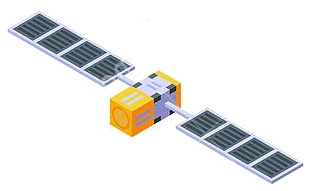
 Aerospace
Aerospace
 Missions to Mars
Missions to Mars



 Aerospace
Aerospace
 Artemis program
Artemis program
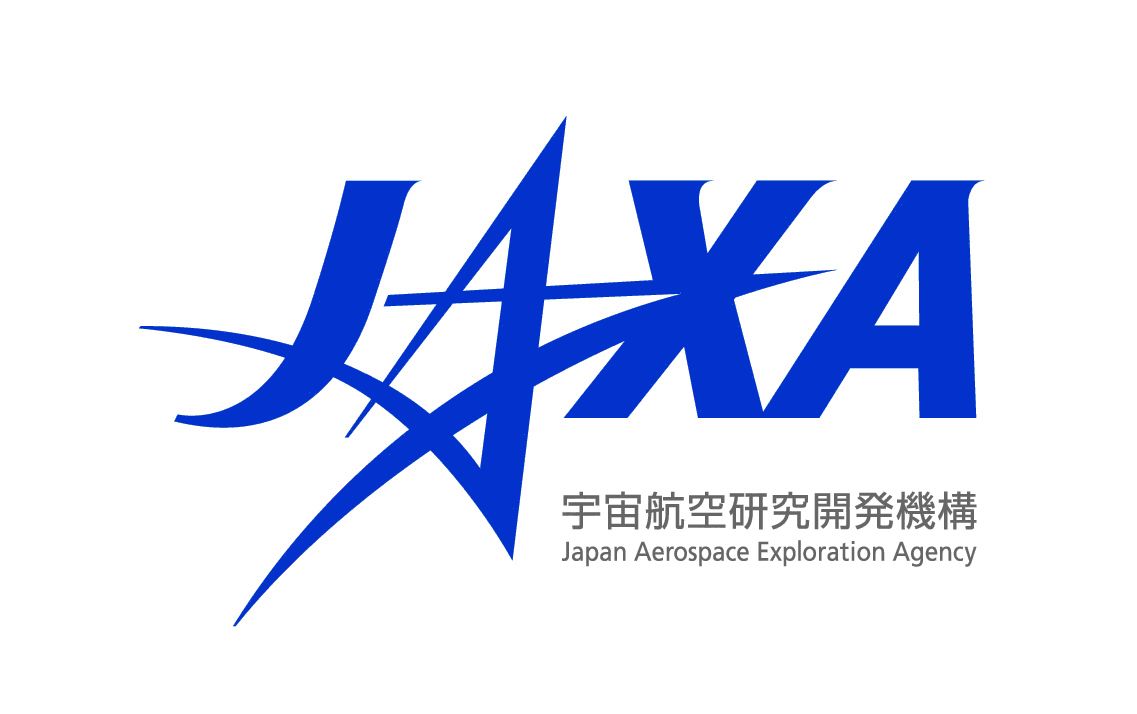
 *Changjiang|Yangtze River
*Changjiang|Yangtze River
 *China International Import Expo,CIIE
*China International Import Expo,CIIE
 *Yangtze River Delta Economic Zone
*Yangtze River Delta Economic Zone
 China
China
 Chinese Super League 2019
Chinese Super League 2019

 Financial
Financial
 ***Global Financial Center
***Global Financial Center
 Women's Soccer World Cup 2007
Women's Soccer World Cup 2007

 History
History
 N 2000 - 2100 AD
N 2000 - 2100 AD

 History
History
 M 1500 - 2000 AD
M 1500 - 2000 AD

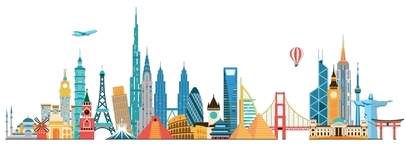 International cities
International cities
 ***Global Urban Economic Competitiveness
***Global Urban Economic Competitiveness
 Yangtze River Delta G60 Science and Technology Innovation Corridor
Yangtze River Delta G60 Science and Technology Innovation Corridor
 Silk road
Silk road
 Shanghai Shi-SH
Shanghai Shi-SH
 Shanghai-Hong Kong Stock Connect
Shanghai-Hong Kong Stock Connect
 Shanghai Cooperation Organization
Shanghai Cooperation Organization

 Vacation and Travel
Vacation and Travel

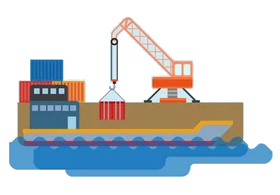 Important port
Important port

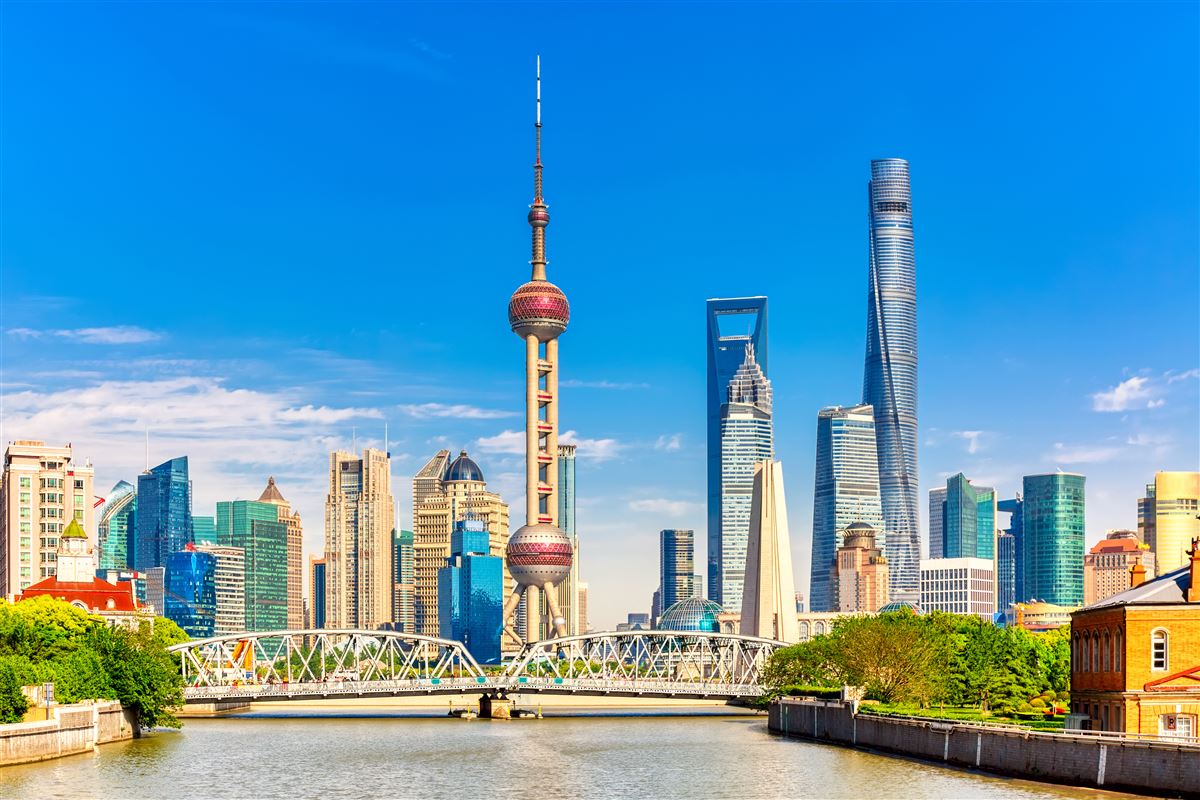
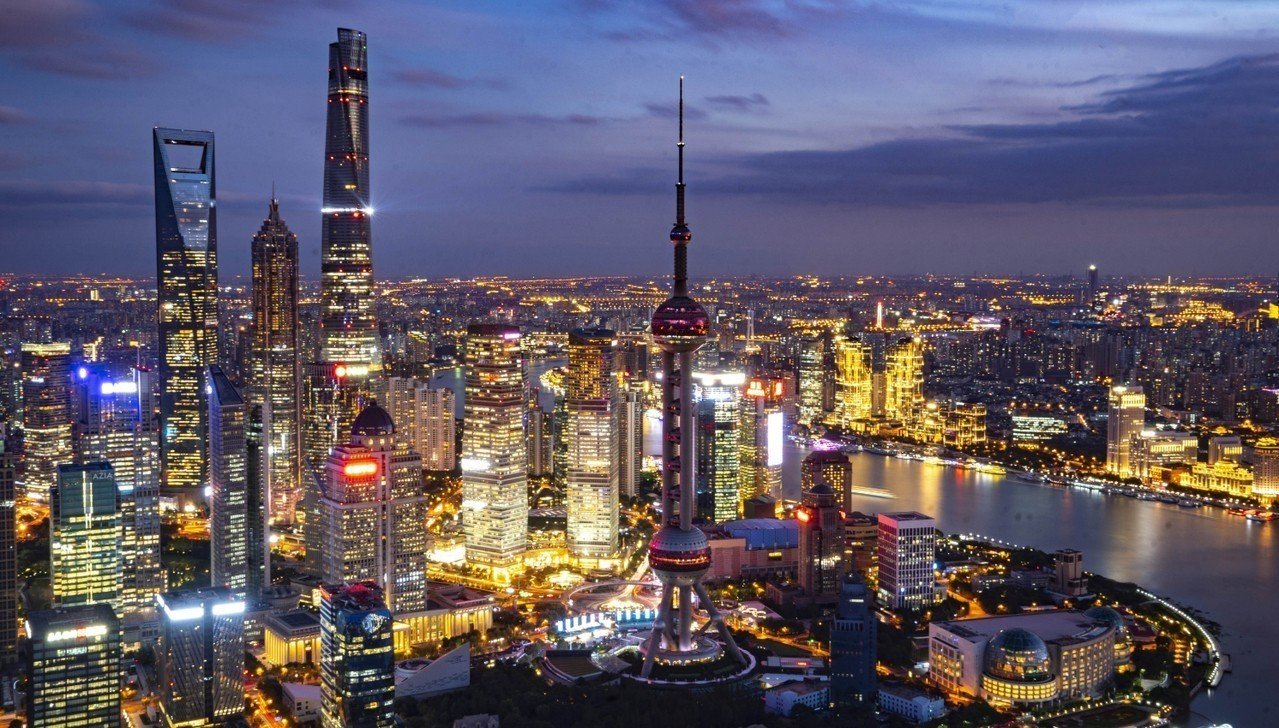
Shanghai oder Schanghai (chinesisch 上海, Pinyin  Shànghǎi?/i) ist die bedeutendste Industriestadt der Volksrepublik China und eine der größten Städte der Welt.
Shànghǎi?/i) ist die bedeutendste Industriestadt der Volksrepublik China und eine der größten Städte der Welt.
Zu Shanghai gehören außer der Innenstadt mit etwa 15 Millionen Einwohnern[2] zahlreiche umliegende, bis 50 km entfernte Stadtbezirke mit weiteren etwa 8 Millionen Einwohnern. Während die Innenstadt eine hohe Bebauungsdichte und geschlossene Siedlungsform hat, dominiert in den Randbezirken eine ländliche, eher provinzielle Siedlungsstruktur. Von den insgesamt etwa 23 Millionen Einwohnern (Volkszählung 2010)[1] sind 15,9 Millionen registrierte Bewohner mit ständigem Wohnsitz (戶口 / 户口, hùkǒu) und 7,1 Millionen temporäre Bewohner (流動人口 / 流动人口, liúdòng rénkǒu) mit befristeter Aufenthaltsgenehmigung (暫住證 / 暂住证, zànzhùzhèng).[3]
Shanghai ist eine regierungsunmittelbare Stadt, das heißt, sie ist direkt der Zentralregierung unterstellt, und ihr Status entspricht dem einer Provinz. Ihr nur 6340,5 km² (2012) großes Gebiet wird durch andauernde Landgewinnung am seichten Bankett des Jangtsekiang-Trichters (insbesondere im südöstlichen Zipfel) stetig leicht größer.
Der Hafen von Shanghai ist mit 31,74 Millionen TEU pro Jahr der größte Containerhafen der Welt (Stand: 2011).[4] Auch nach Gesamtumschlag ist der Hafen mit 736 Millionen Tonnen Waren im Jahr 2012 der größte.
Die Stadt ist ein wichtiger Verkehrsknotenpunkt und ein bedeutendes Kultur- und Bildungszentrum mit zahlreichen Universitäten, Hochschulen, Forschungseinrichtungen, Theatern und Museen.
上海(Shanghai),简称“沪”,有“东方巴黎”的美称,中华人民共和国直辖市之一,中国国家中心城市,中国的经济、金融中心,繁荣的国际大都市,拥有中国大陆首个自贸区“中国(上海)自由贸易试验区”。
上海作为中国民族工业的发祥地,地处长江入海口,东向东海,隔海与日本九州岛相望,南濒杭州湾,西与江苏、浙江两省相接,共同构成以上海为龙头的中国最大经济区“长三角经济圈”。
上海是中国的历史文化名城,拥有深厚的近代城市文化底蕴和众多历史古迹,江南的吴越传统文化与各地移民带入的多样文化相融合,形成了特有的海派文化。2010年成功举办了2010年世界博览会、中国上海国际艺术节、上海国际电影节等大型文化交流活动。
上海属北亚热带湿润季风气候,四季分明,日照充分,雨量充沛。上海气候温和湿润,春秋较短,冬暖夏凉。1月份最冷,平均气温为4.9℃,通常7月份最热,平均气温30.9℃。
上海是中国的经济、交通、科技、工业、金融、贸易、会展和航运中心。GDP总量居中国城市之首。上海港货物吞吐量和集装箱吞吐量均居世界第一,是一个良好的滨江滨海国际性港口。上海正致力于在2020年建成国际金融、航运和贸易中心。上海作为远东最大都市之一,有“中国的商业橱窗”之称。
上海是中国主要旅游城市之一。主要景点有上海博物馆、上海城市规划展示馆、东方明珠广播电视塔、上海大剧院、上海豫园、豫园商城、上海外滩风景区、上海新天地娱乐休闲街、陆家嘴金融贸易区等。
上海,简称沪,别称申,是中华人民共和国直辖市,也是中国经济最发达的城市,国际金融、贸易和航运中心之一[参 1],其港口为全球最繁忙的港口;主要产业包括商贸流通、金融、信息、制造等。上海位于中国东部弧形海岸线的正中间,长江三角洲最东部,东临东海,南濒杭州湾,西与江苏、浙江两省相接,北端的崇明岛处于长江入海口中,占地面积6,340平方公里。上海市是世界最大的城市之一,截至2016年,人口2419.70万,其中本地户籍人口占59%,达1439.50万[参 2];近年来,上海市也与周围的江苏、浙江两省高速发展的多个城市共同构成了长江三角洲城市群,是世界几大城市群之一[参 3]。 2017年生产总值为30,133.86亿元人民币,按同年国际汇率可兑换成4463.09亿美元或8587.59亿国际元,为世界一大经济区域;人均生 产总值则为124,571元人民币,按同年国际汇率可兑换成18,450美元或35,500国际元,接近发达国家20,000美元的标准。2017年上海 居民全年人均可支配收入为58,988元人民币,位居全国首位。2017年上海居民的平均税后月收入为1,336美元,比较其他国内一线城市为高,但较香港、伦敦、东京、新加坡、旧金山和苏黎世等城市低。
晋代,上海初步发展为一个渔港、盐产地和商贸集镇。唐代到元代,上海地区归华亭县、松江府管辖。明清两朝,上海已较为繁荣,棉纺织业发达[参 4]。1843年,根据《南京条约》,上海作为通商五口之一正式开埠,由此开始上海租界的历史。上海凭借独特的政治环境,经济迅速发展,吸引了苏、浙、粤、皖、鲁等周边省份及外国的移民,成为中国乃至远东地区最大的都会之一[参 5]。江南地区传统的吴越文化与各地移民带入的多样文化(包括开埠后的西方近现代文化)融合,逐渐形成了特有的海派文化。在民国时期,上海是亚洲最大的城市,中国最重要的工商业中心,被蒋中正评价为“中外观瞻之所系”[参 6]。中华人民共和国成立后,中央政府实行计划经济,主要发展内陆的重工业等。六四天安门事件后,西方国家对中华人民共和国经济封锁,上海大量支援中国大陆其他地区的发展[参 7]。改革开放后,1990年,上海迎来浦东开发开放政策,经济成长速度加快[参 8];2005年设立的国家综合配套改革试验区、2013年批准的上海自贸区[参 9],也令上海经济进一步发展,成为了世界级大都市,更是中国大陆的经济、金融、贸易中心城市和中国财政收入的支柱城市[参 10][参 11][参 12][参 13],但目前上海正面临外地来沪人员所导致的犯罪率上升,同时人才外流、上海话及海派文化消失等问题也为上海的前景带来隐忧[参 14][参 15]。
上海是中国近现代经济发展的典范[参 16],因此也拥有不少著名地标景观,包括豫园-城隍庙、南京路-外滩、陆家嘴摩天大楼天际线等。
上海市(シャンハイし、簡体字: 上海市、拼音: Shànghǎi ( 聞く)、呉語発音: [z̻ɑ̃˨hᴇ˦]、英語: Shanghai[1][ˈʃæŋhaɪ, ʃæŋˈhaɪ] (
聞く)、呉語発音: [z̻ɑ̃˨hᴇ˦]、英語: Shanghai[1][ˈʃæŋhaɪ, ʃæŋˈhaɪ] (![]() 音声ファイル))は、中華人民共和国の直轄市である。
音声ファイル))は、中華人民共和国の直轄市である。
有数の世界都市であり、同国の商業・金融・工業・交通などの中心地、香港・北京と並ぶ中国最大の都市の一つである。アメリカのシンクタンクが2017年に発表した総合的な世界都市ランキングにおいて、世界9位と評価された[2]。
2012年6月時点の常住人口は2,400万人を超え[3]、市内総生産は2兆3,560億元(約45兆円)であり[4]、いずれも首都の北京市を凌ぎ中国最大である。中華人民共和国国務院により国家中心都市の一つに指定されている。
略称は滬(簡体字: 沪/こ:フー)だが、古称の申(しん:シェン)も用いられる。
Shanghai (Chinese: 上海; Wu Chinese:  [zɑ̃.hɛ]; Mandarin: [ʂâŋ.xài] (
[zɑ̃.hɛ]; Mandarin: [ʂâŋ.xài] ( listen)) is one of the four municipalities under the direct administration of the central government of China, the largest city in China by population, and the second most populous city proper in the world, with a population of more than 24 million as of 2017.[14][15] It is a global financial centre[16] and transport hub, with the world's busiest container port.[17] Located in the Yangtze River Delta, it sits on the south edge of the estuary of the Yangtze in the middle portion of the East China coast. The municipality borders the provinces of Jiangsu and Zhejiang to the north, south and west, and is bounded to the east by the East China Sea.[18]
listen)) is one of the four municipalities under the direct administration of the central government of China, the largest city in China by population, and the second most populous city proper in the world, with a population of more than 24 million as of 2017.[14][15] It is a global financial centre[16] and transport hub, with the world's busiest container port.[17] Located in the Yangtze River Delta, it sits on the south edge of the estuary of the Yangtze in the middle portion of the East China coast. The municipality borders the provinces of Jiangsu and Zhejiang to the north, south and west, and is bounded to the east by the East China Sea.[18]
As a major administrative, shipping and trading city, Shanghai grew in importance in the 19th century due to trade and recognition of its favourable port location and economic potential. The city was one of five treaty ports forced open to foreign trade following the British victory over China in the First Opium War. The subsequent 1842 Treaty of Nanking and 1844 Treaty of Whampoa allowed the establishment of the Shanghai International Settlement and the French Concession. The city then flourished as a centre of commerce between China and other parts of the world (predominantly the Occident), and became the primary financial hub of the Asia-Pacific region in the 1930s.[19] However, with the Communist Party takeover of the mainland in 1949, trade was limited to other socialist countries, and the city's global influence declined. In the 1990s, the economic reforms introduced by Deng Xiaoping resulted in an intense re-development of the city, aiding the return of finance and foreign investment to the city. It has since re-emerged as a hub for international trade and finance; it is the home of the Shanghai Stock Exchange, one of the world's largest by market capitalization.[20]
Shanghai has been described as the "showpiece" of the booming economy of mainland China;[21][22] renowned for its Lujiazui skyline, and museums and historic buildings, such as those along The Bund, as well as the City God Temple and the Yu Garden.
Shanghai (pron. [ʃaŋˈɡai][2]; in cinese 上海S, ShànghǎiP, abbreviazione 沪 o 申, Hù o Shēn; in italiano anche Sciangai[3]), situata sul fiume Huangpu presso il delta del Chang Jiang, è la città più popolosa della Cina[4] e del mondo, oltre che la seconda municipalità autonoma del Paese dopo Chongqing in quanto ha oltre 32 milioni di abitanti, ed è una delle quattro città municipalità della Cina a godere dello status di provincia.
In cinese Shànghǎi è abbreviata in Hù (滬T, 沪S) e Shēn (申S); le due sillabe shàng e hǎi significano letteralmente «sul mare» o anche «verso il mare». L'interpretazione è che la città originariamente fosse situata sul mare oppure, secondo i locali, fosse il punto più alto in cui arrivava il mare.
Shanghai è vista come capitale economica della Cina: grazie allo sviluppo dei decenni passati Shanghai è un centro economico, finanziario, commerciale e delle comunicazioni di primaria importanza della Repubblica Popolare Cinese. Il suo porto, il primo del Paese, è uno dei più trafficati al mondo assieme a Singapore e Rotterdam. Nel 2010 ha superato Singapore come volume di traffico.[5]
Famosi sono alcuni soprannomi della città tra i quali: «La Parigi d'oriente», «La regina d'oriente», «Perla d'oriente». A riconferma di ciò, un'autorevole indagine pone Shanghai tra le metropoli più alla moda d'Asia e la quattordicesima in tutto il mondo.[6]
Shanghái6 (pronunciado /sangái/,7 en chino estándar [ʂaŋ˧˥ xai̯˨˩˦](![]() escuchar), en chino: 上海市, pinyin: Shànghǎi, shanghainés: zånhae, literalmente: 'en el mar'8) es uno de los cuatro municipios que, junto con las veintidós provincias, cinco regiones autónomas y dos regiones administrativas especiales, conforman la República Popular China. Por otra parte, Shanghái es la ciudad más poblada de China y una de las más pobladas del mundo con más de 24 millones de habitantes.9 Situada en China del Este, Shanghái yace en el delta del río Yangtsé, centrada en la costa del mar de la China Oriental y es administrada al máximo nivel con la categoría de municipio de control directo.10
escuchar), en chino: 上海市, pinyin: Shànghǎi, shanghainés: zånhae, literalmente: 'en el mar'8) es uno de los cuatro municipios que, junto con las veintidós provincias, cinco regiones autónomas y dos regiones administrativas especiales, conforman la República Popular China. Por otra parte, Shanghái es la ciudad más poblada de China y una de las más pobladas del mundo con más de 24 millones de habitantes.9 Situada en China del Este, Shanghái yace en el delta del río Yangtsé, centrada en la costa del mar de la China Oriental y es administrada al máximo nivel con la categoría de municipio de control directo.10
El área donde se sitúa la ciudad fue colonizada y asentada por los refugiados que huían de los mongoles hacia el 960-1126 d. C. Antiguamente se dedicaba a la pesca y textiles pero su importancia creció en el siglo XIX gracias a su localización estratégica como puerto de mar y por ser forzada a abrirse al tráfico internacional por el Tratado de Nankín en 1842.11 Shanghái fue floreciendo como eje comercial entre China y las potencias coloniales y como nodo financiero y comercial a partir de 1930.12 La población occidental comenzó a abandonar la zona a comienzos de la guerra del Pacífico en 1941 hasta que finalmente, tras la revolución y guerra civil, en 1949 la actividad de Shanghái se redujo considerablemente dejando de recibir inversión extranjera. Con las reformas económicas durante la década de los 90, Shanghái experimentó un espectacular crecimiento financiero y turístico, siendo sede de numerosas empresas multinacionales y vanguardistas rascacielos. Actualmente es el mayor puerto del mundo por volumen de mercancías.13
La ciudad es un destino turístico por sus monumentos como el Bund, el Templo del Dios de la Ciudad, los rascacielos del Pudong y como centro cosmopolita de la cultura y el diseño,1415 por otro lado acogió la Exposición Universal de 2010 sobre el urbanismo del futuro. A día de hoy Shanghái es descrita habitualmente como la «pieza estrella» de la economía de mayor crecimiento del mundo16 inmersa en una competición con Cantón y el área urbana del río Perla, por convertirse en la mayor urbe de China.
Administrativamente, Shanghái es una de las cuatro municipalidades de la República Popular China administradas directamente por el gobierno central del país. Shanghái es la capital económica de China. Ocupa una superficie de 6340 km². La lengua local no es el mandarín, sino el shanghainés, una variedad de chino wu (吳語, wúyǔ).
Шанха́й (кит. 上海, пиньинь: Shànghǎi; у 上海 [zãhe], Zånhae) — крупнейший по численности населения город Китая и мира[2]. Расположен в дельте реки Янцзы на востоке Китая. Один из четырёх городов центрального подчинения КНР, важный финансовый и культурный центр страны, а также крупнейший в мире морской порт[3].
Первый из двух иероглифов, которыми записывается название Шанхая, имеет значения «на/над», «верх», «входить/вступать», второй — «море». На местном диалекте они произносятся как /zɑ̃.'he/ (занхэ). Первое упоминание этого названия относится к династии Сун (XI век), когда уже существовало слияние рек Янцзы и Хуанпу и населённый пункт с таким названием. Существуют разногласия относительно интерпретации этого названия, официальная китайская историография трактует его как «верховья моря», «взморье» (кит. упр. 海之上洋, пиньинь: hǎi zhī shàng yáng).
Однако другое прочтение (особенно в северных диалектах) предполагает буквальное значение: «вступать на море», то есть выходить в море, что вполне подходило бы для портового города. Ещё одна, более поэтическая версия предполагает, что иероглифы следует читать в обратном порядке (海上 hǎi shàng), и тогда, согласно порядку слов в китайском языке, они приобретают значение «[город] на море», «приморск». На Западе ранее существовали различные варианты транскрипции: Shanghai (англ.), Schanghai (нем.), Sjanghai (голл.) и Changhaï (фр.). В 1990-х годах написание Shanghai — согласно правилам транскрипции пиньинь — стало универсальным для большинства языков, использующих латиницу.
В китайском языке Шанхай записывается сокращённо как Ху (кит. упр. 沪, пиньинь: hù) либо Шэнь (кит. упр. 申, пиньинь: shēn). Первый вариант происходит от старого названия реки Сучжоухэ — Худу (кит. упр. 沪渎, пиньинь: hù dú), второй — от имени чуского дворянина Чуньшэнь-цзюня (кит. упр. 春申君, пиньинь: Chūn shēn jūn, буквально: «господин Чуньшэнь»), жившего в III в. до н. э., в земли которого входила территория современного Шанхая и которого почитали в этих местах как героя. В названиях шанхайских спортивных команд и газет часто присутствует иероглиф 申. Шанхай также иногда называют Шэньчэн (кит. упр. 申城, пиньинь: shēn chéng — «город Шэня»).
В западных языках у Шанхая существовало много других имён, среди них «Восточный Париж», «Королева Востока», «Жемчужина Востока» и даже «Шлюха Азии» (за разгул порока, наркотиков и проституции в 1920-е — 1930-е года; ср. нарицательное «шанхай» в русском языке в значении «беспорядок», «хаос», а также англ. to shanghai — 1) «опоив, отправить матросом в плавание»; 2) амер. «добиться (чего-л.) нечестным путём или принуждением»).
 China
China
 Chinese Super League 2019
Chinese Super League 2019

 Financial
Financial
 ***Global Financial Center
***Global Financial Center

 History
History
 N 2000 - 2100 AD
N 2000 - 2100 AD
 Guangdong Sheng-GD
Guangdong Sheng-GD

 International cities
International cities
 ***Global Urban Economic Competitiveness
***Global Urban Economic Competitiveness
 Special Economic Zone
Special Economic Zone

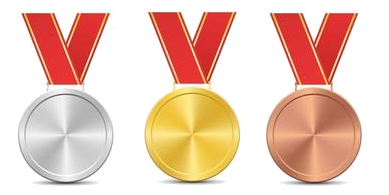 Sport
Sport
 The Ocean Race
The Ocean Race

 Vacation and Travel
Vacation and Travel

 Important port
Important port
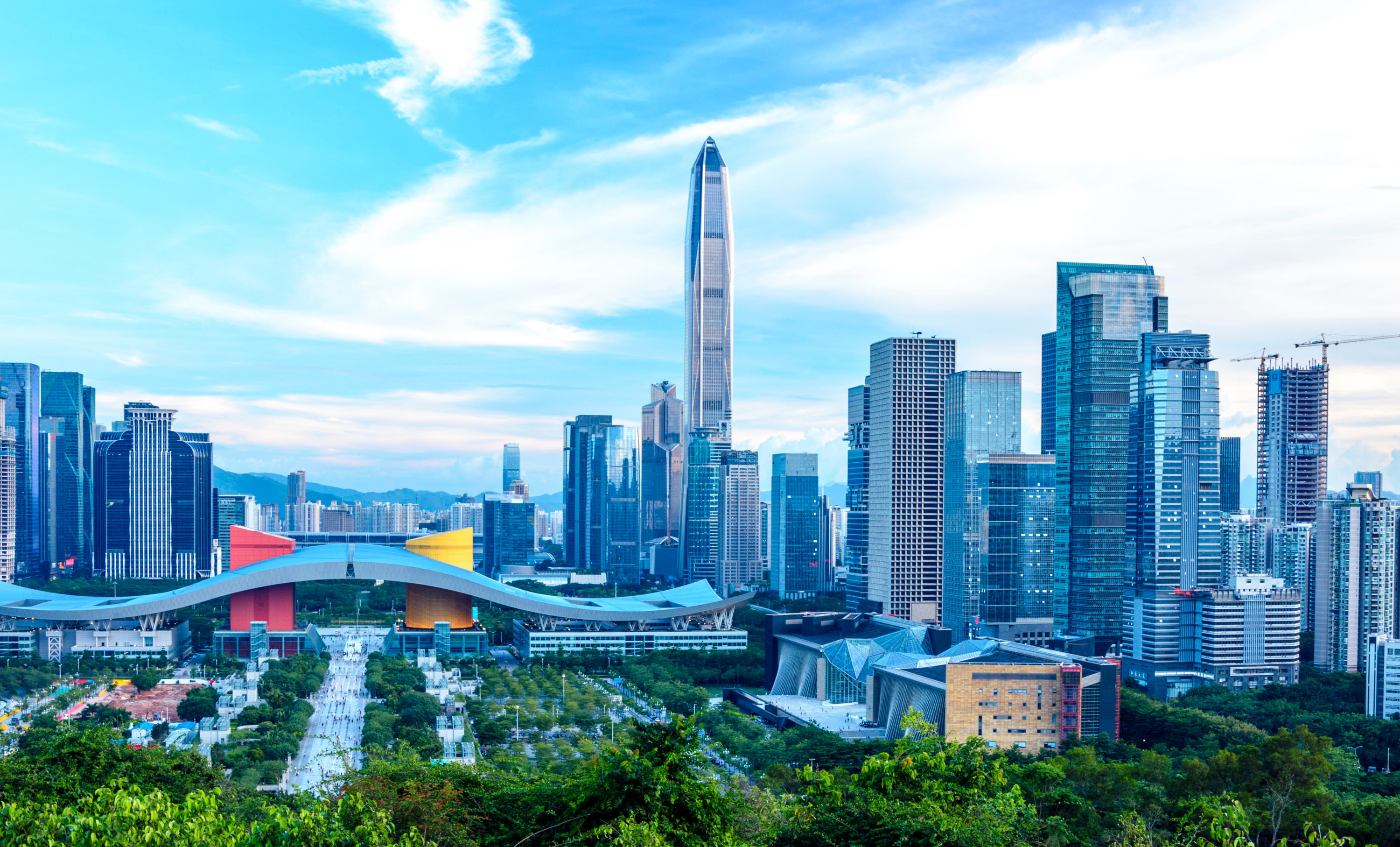
Shenzhen (chin. 深圳市, Shēnzhèn Shì) ist eine Unterprovinzstadt in der Provinz Guangdong der Volksrepublik China. Shenzhen liegt im Süden der Provinz, nur durch einen Fluss von Hongkong getrennt. Die Stadt gilt als eine der bedeutendsten Städte für ausländische Investitionen und ist eine der am schnellsten wachsenden Städte der Welt. Im Jahr 1979 lebten im heutigen Stadtgebiet gerade einmal 30.000 Einwohner. Heute ist Shenzhen eine moderne Metropole mit über 12 Millionen Einwohnern[3], die fast genauso schnell wächst wie Shanghai. Shenzhen ist die Stadt mit dem höchsten Pro-Kopf-Einkommen in China (ohne Hongkong und Macao). Tragsäule der lokalen Wirtschaft ist die Elektronik- und Telekommunikationsindustrie.(Quelle:Wikipedia)
Shenzhen (chinesisch 深圳市, Pinyin ) ist eine Unterprovinzstadt in der Provinz Guangdong der Volksrepublik China.
Shenzhen liegt im Süden der Provinz und grenzt südlich an die Sonderverwaltungszone Hongkong. Die Planstadt gilt aufgrund ihres Status als Sonderwirtschaftszone als eine bedeutende Stadt für ausländische Investitionen und ist eine der am schnellsten wachsenden Städte der Welt. Shenzhen ist die Stadt mit dem höchsten Pro-Kopf-Einkommen in China (ohne Hongkong und Macau). Tragende Säulen der lokalen Wirtschaft sind die Elektronik- und die Telekommunikationsindustrie.
Seit 2008 ist Shenzhen als UNESCO City of Design Teil des Creative Cities Network.
深圳市,简称深,别称鹏城,是位于中华人民共和国广东省的地级市,同时是副省级计划单列市、经济特区及国家综合配套改革试验区,1979年1月在原宝安县的基础上设立,为中国的证券资本市场中心、以及重要的国际经济中心[6]。深圳全市均划入深圳经济特区范围。南边与香港接壤,北与惠州市、东莞市毗邻。
深圳因改革开放而快速发展,在中国的制度创新、扩大开放等方面承担着试验和示范的重要使命。1980年,中国第一个经济特区——深圳经济特区在此成立[7]。自1999年起,中国国际高新技术成果交易会每年定期在深圳举行。2010年,前海深港现代服务业合作区获中央政府批准成立,将作为深圳与香港合作的先导区。2011年,深圳主办第26届世界大学生夏季运动会[8]。2016年,深圳市生产总值超越广州市成为中国内地经济总量第三大城市。
深圳是中国南方重要的高新技术研发和制造基地。深圳港集装箱吞吐量连续多年居于世界第三,外贸出口总额连续20余年居中国大陆第一位,深圳宝安国际机场是中国大陆第五大民航机场。深圳证券交易所的首次公开募股数量自2009年至2015年居世界第一位,是中国企业重要的融资平台[9]。
深圳市(しんせんし、簡体字: 深圳市、拼音: 、英語: Shenzhen)は中華人民共和国広東省に位置する副省級市。
深圳市は香港の新界と接し、経済特区に指定されている。北京市、上海市、広州市と共に、中国本土の4大都市と称される「北上広深」の一つであり、「一線都市」に分類されている[2]。中国屈指の世界都市であり、金融センターとしても重要な機能を果たしている。2010年の近郊を含む都市的地域の人口は1,447万人であり、世界第15位である[3]。アメリカのシンクタンクが2017年に発表した総合的な世界都市ランキングにおいて、世界80位の都市と評価された[4]。中国本土では北京市、上海市に次ぐ3位である。
住民構成の特徴としては移民都市であることがあげられる。元来は宝安県として一集落に過ぎなかったものが、改革開放経済の過程で外部より労働人口が流入して都市が形成され、広東省でありながら広東語が使われる比率が極めて低い地域となっている。また深圳市には政府主導で新興事業発展のためのインフラが整えられていることから、スタートアップ企業や製造工場が数多く存在し、「中国のシリコンバレー」等とも呼ばれている。
なお、原住民もある程度存在し、主には農業・漁業に従事する。原住民は香港の新界地域と同じく、大きく客家語を話す客家と広東語を話す囲頭人の2つのグループに分ける。客家は主に北東部の竜崗区と宝安区の東部、福田区の北部、南山区の北部などの丘陵区域に分布し、囲頭人は主に羅湖区、福田区の中南部、南山区の中南部、宝安区の中西部などの平原地域に居住する[5][6]。
Shenzhen ([ʂə́n.ʈʂə̂n] (![]() listen)) is a major city in Guangdong Province, China, which forms part of the Pearl River Delta megalopolis north of Hong Kong. It holds sub-provincial administrative status, with powers slightly less than a province.
listen)) is a major city in Guangdong Province, China, which forms part of the Pearl River Delta megalopolis north of Hong Kong. It holds sub-provincial administrative status, with powers slightly less than a province.
Shenzhen, which roughly follows the administrative boundaries of Bao'an County, was made a city in 1979, and was named after the former county town, whose train station was the last stop on the Mainland Chinese section of the Kowloon–Canton Railway.[7] In 1980 Shenzhen was designated China's first Special Economic Zone.[8] Shenzhen's registered population in 2017 is estimated to be at 12,905,000.[1] However, officials estimate that the population of Shenzhen is about 20 million due to the large unregistered floating migrant population living in the city.[9][10] Shenzhen was one of the fastest-growing cities in the world in the 1990s and the 2000s.[11]
Shenzhen's cityscape is the result of its vibrant economy made possible by rapid foreign investment since the institution of the policy of "reform and opening" in 1979.[12] The city is a leading global technology hub, dubbed the next Silicon Valley.[13][14][15]
Shenzhen is home to the Shenzhen Stock Exchange as well as the headquarters of numerous multinational companies such as JXD, Vanke, Hytera, CIMC, Shenzhen Airlines, Nepstar, Hasee, Ping An Bank, Ping An Insurance, China Merchants Bank, Tencent, ZTE, Huawei and BYD.[16] Shenzhen ranks 22nd in the 2017 Global Financial Centres Index.[17] It also has one of the busiest container ports in the world.[18]
Shenzhen (chinois : 深圳市 ; pinyin : ; cantonais Jyutping : sam¹ zan³ si⁵ ; cantonais Yale : sàm jan si⁵) est une ville sous-provinciale de la province du Guangdong en Chine.
Située en bordure de Hong Kong, la municipalité est encore largement rurale dans les années 1970. En 1980, une partie de son territoire acquiert le statut de zone économique spéciale et devient l'un des principaux lieux d'expérimentation de la politique d'ouverture aux investissements étrangers. Bénéficiant de sa position géographique privilégiée, elle connaît un essor économique et démographique spectaculaire. En 2010, elle compte environ 10 millions d'habitants et constitue une des Municipalités les plus riches de Chine (en). Elle fait partie de la mégalopole chinoise du delta de la Rivière des Perles.
La population, en grande partie immigrée, vient de diverses régions chinoises. Le mandarin, la « langue commune », est autant parlé que le cantonais, langue traditionnelle de la région.
Shenzhen (IPA ʂə́n.ʈʂə̂n, 深圳S, ShēnzhènP) è una città sub-provinciale della Repubblica Popolare Cinese appartenente alla provincia di Guangdong nella Cina continentale meridionale. Shenzhen, trovandosi immediatamente a nord della Regione Amministrativa Speciale di Hong Kong, detiene lo stato amministrativo sub-provinciale che gli attribuisce poteri leggermente diversi e limitati rispetto alla Provincia di appartenenza.
Shenzhen era semplicemente una Città-Mercato composta da 30 mila persone lungo la rotta ferroviaria di Kowloon-Canton. Nel 1979 fu ufficialmente nominata città e successivamente, nel Maggio 1980, Deng Xiaoping decise di lanciare uno dei più audaci esperimenti economici mai tentati prima.
Con Shenzhen, si dà inizio al piano sperimentale per trasformare il modello economico Cinese tradizionale in un modello più liberale e aperto a investimenti provenienti da compagnie estere e permettere a quest'ultime di potersi insediare e operare all'interno della prima "zona economica speciale" in Cina (SEZ)
Shenzhen (pronunciado [ʂə́n.ʈʂə̂n/Shén-Zhen](![]() escuchar) (chino: 深圳市, pinyin: Shēnzhèn) es una ciudad-subprovincia de 12 millones de habitantes localizada en el delta del río de las Perlas, en la costa sur de la provincia de Cantón, en la República Popular China.
escuchar) (chino: 深圳市, pinyin: Shēnzhèn) es una ciudad-subprovincia de 12 millones de habitantes localizada en el delta del río de las Perlas, en la costa sur de la provincia de Cantón, en la República Popular China.
El nombre de la ciudad tiene su origen en la denominación que daban los habitantes de la zona a las zanjas de los arrozales a las que llamaban zhen o chon. Shénzhen significa "zanjas profundas", debido a que la zona en que la ciudad se asienta es una región atravesada por ríos y en la cual existen profundas zanjas en los arrozales.4
Hoy en día se la considera el "Silicon Valley" de China5.
Шэньчжэ́нь (кит. упр. 深圳, пиньинь: Shēnzhèn, буквально — «глубокая межа») — город субпровинциального значения в провинции Гуандун на юге Китайской Народной Республики, граничит с Гонконгом. Население по переписи 2000 года составляло 7 008 831 человек[2], а согласно переписи 2010 года — 10 357 938 человек[2] (по данным ООН, Шэньчжэнь входит в первую пятёрку городов мира по темпам прироста населения[3]). Благодаря масштабным иностранным и государственным инвестициям за довольно короткий период времени город превратился в крупный промышленный, финансовый и транспортный центр экономического региона дельты Жемчужной реки и всей страны в целом. Сегодня Шэньчжэнь является одним из наиболее динамично развивающихся городов Китая, четвёртым из числа наиболее конкурентоспособных городов страны, крупнейшим среди китайских городов по объёму экспорта и служит своеобразными воротами для привлечения инвестиций, новых технологий и культуры ведения бизнеса[4][5].
Фактически город был основан в 1979 году на месте уезда Баоань, переименованного в Шэньчжэнь, но городское поселение прослеживается на данной территории с IV века. В 2008 году Шэньчжэнь был выбран ЮНЕСКО «Творческим городом дизайна»[6], в 2011 году принимал XXVI Всемирную летнюю Универсиаду, благодаря которой существенно обновил и расширил свою инфраструктуру. Шэньчжэнь знаменит, прежде всего, своей высотной архитектурой, тематическими парками, отраслевыми выставками и, конечно же, как один из крупнейших центров электронной и электротехнической промышленности (например, большая часть популярных iPhone и iPad производится именно здесь[7]).
Согласно рейтингу сайта Tech Insider (подразделение портала Business Insider), Шэньчжэнь входит в число самых технологичных городов мира[8].

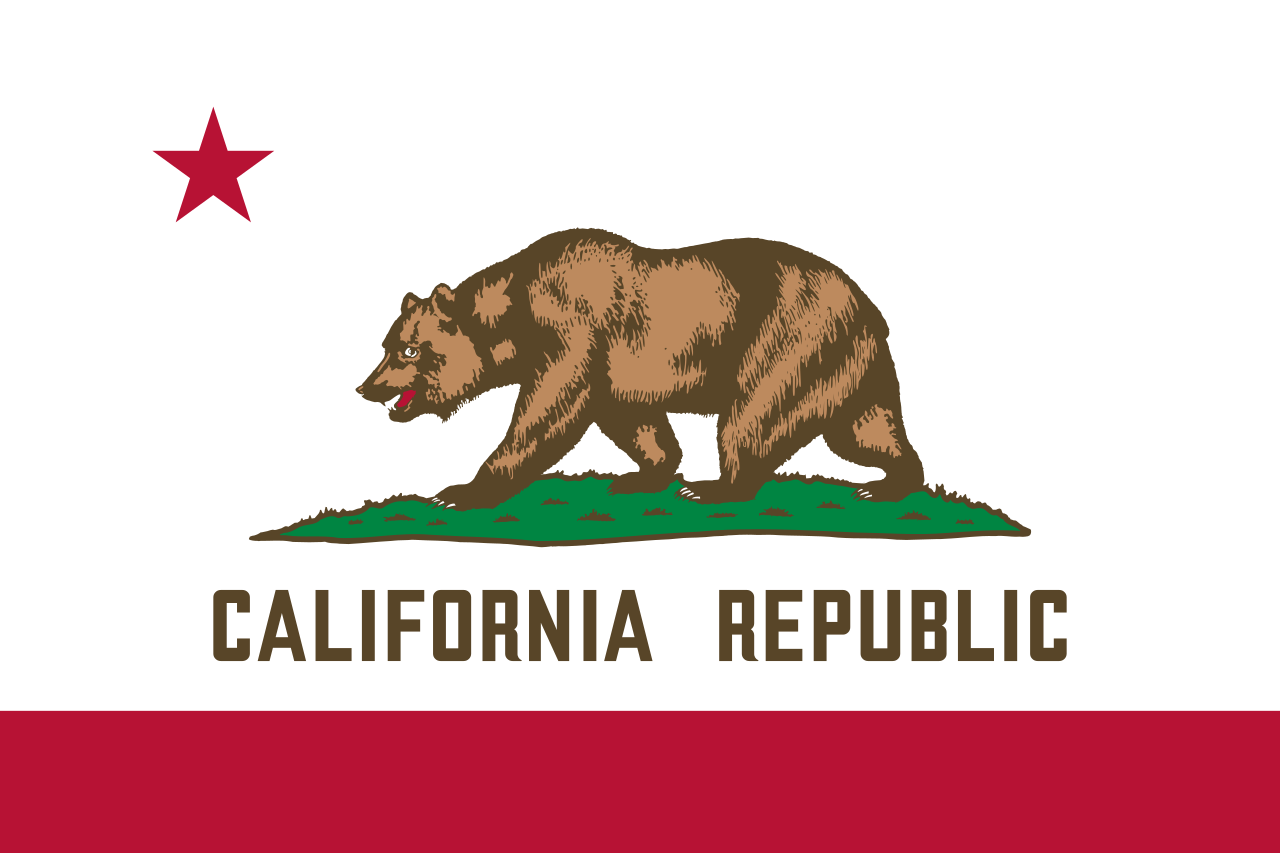 California-CA
California-CA
 Women's Soccer World Cup 1999
Women's Soccer World Cup 1999

 History
History
 M 1500 - 2000 AD
M 1500 - 2000 AD

 History
History
 N 2000 - 2100 AD
N 2000 - 2100 AD

 International cities
International cities
 ***Global Urban Economic Competitiveness
***Global Urban Economic Competitiveness
 United States
United States

San José [ˌsænhoʊˈzeɪ] (amerikanisiert zu San Jose) ist eine Stadt in Kalifornien mit dem Sitz der County-Verwaltung des Santa Clara County. Die Stadt hatte laut der letzten Volkszählung im Jahr 2010 952.555 Einwohner (Schätzung 2016: rund 1.000.000, U.S. Census Bureau). Sie liegt am Südende der San Francisco Bay innerhalb der informellen Grenzen des Silicon Valley.
Der Name San José entspricht der spanischen Schreibweise aus der Gründungszeit der Stadt. Namen mit nationalen Sonderzeichen werden in den USA üblicherweise nicht genutzt, deshalb ist der Name San Jose in der englischen Sprache zu nutzen. Auf der offiziellen Website der Stadt wird jedoch der spanische Name genutzt.
Die Stadt ist Sitz der San José State University und Sitz des Bistums San Jose in California.
圣何塞(San José;/ˌsæn hoʊˈzeɪ/),或译圣荷西、旧译山河城或山河市,是美国加州旧金山湾区的一个城市。位于旧金山湾区南部、圣克拉拉县和硅谷境内,是在人口上加州的第三大城,仅次于洛杉矶和圣迭戈,并且在2005年超越底特律市成为美国的第十大城;圣何塞也是圣克拉拉县的首府。
圣何塞在1777年建立时为西班牙属墨西哥新加利福尼亚(后来的上加利福尼亚)的第一个城镇,是一个为了提供附近军事设施食物而设的农业镇。在1850年正式立市时也是加州加入美国联邦后的第一个成立的城市,也是加州的第一个首府。在第二次世界大战结束后为了安置许多的退伍军人和他们的家庭,以及应付1950年代和1960年代的人口扩张和急速经济成长,在做为一个农业城镇150年后,圣何塞渐渐成为旧金山和后来1970年代硅谷的一个住房社区。随着高科技公司在1980年代和1990年代创立于或移入圣何塞,圣何塞也逐渐成为硅谷的商业和研发中心,也开始有了硅谷首都(Capital of Silicon Valley)这个别名。
サンノゼ(スペイン語: San José、英語: San Jose)は、アメリカ合衆国カリフォルニア州にある都市。
San Joséはスペイン語で「聖ヨセフ」を意味する。スペイン語本来の発音は[ˈsãŋxo.ˈse](サンホセ)だが、英語での発音は転訛して[ˌsænəˈzeɪ](サノゼー)、[ˌsænoʊˈzeɪ](サノーゼー)、[ˌsænhoʊˈzeɪ](サンホーゼー)となり[2]、アメリカ英語では[ˌsænhoʊˈzeɪ](サンホーゼー)となる。サンノゼ市の発行する日本語のパンフレットには「サンホセ」と表記されている。中国語表記は「聖荷西」。
半導体・コンピュータ関連の産業が集積するシリコンバレーの中心都市で、「Capital of Silicon Valley(シリコンバレーの首都)」を名乗る。他の大都市に比べて所得水準が高く、アメリカ国内の人口25万人以上の都市を対象とした全米安全度調査の第1位である。
San Jose[A] (/ˌsæn hoʊˈzeɪ, -ˈseɪ/; Spanish for 'Saint Joseph'; Spanish: [saŋ xoˈse]),[13] officially the City of San José,[B] is an economic, cultural and political center of Silicon Valley and the largest city in Northern California. With an estimated 2017 population of 1,035,317, it is the third most populous city in California (after Los Angeles and San Diego) and the tenth most populous in United States.[14] Located in the center of the Santa Clara Valley, on the southern shore of San Francisco Bay, San Jose covers an area of 179.97 square miles (466.1 km2). San Jose is the county seat of Santa Clara County, the most affluent county in California and one of the most affluent counties in the United States.[15][16][17][18] San Jose is the largest city in both the San Francisco Bay Area and the San Jose-San Francisco-Oakland Combined Statistical Area, which contain 7.7 million and 8.7 million people respectively.[19][20][21]
San Jose is a global city,[22] notable as a center of innovation, for its affluence,[23][24][25] weather, and high cost of living.[26] San Jose's location within the booming high tech industry, as a cultural, political, and economic center has earned the city the nickname "Capital of Silicon Valley". San Jose is one of the wealthiest major cities in the United States and the world, and has the third highest GDP per capita in the world (after Zürich, Switzerland and Oslo, Norway), according to the Brookings Institution.[27] The San Jose Metropolitan Area has the most millionaires and the most billionaires in the United States per capita.[28] With a median home price of $1,085,000,[29] San Jose has the most expensive housing market in the country and the fifth most expensive housing market in the world, according to the 2017 Demographia International Housing Affordability Survey.[30][31][32][33] Major global tech companies including Cisco Systems, eBay, Cadence Design Systems, Adobe Systems, PayPal, Brocade, Samsung, Acer, and Western Digital maintain their headquarters in San Jose, in the center of Silicon Valley.
Before the arrival of the Spanish, the area around San Jose was inhabited by the Tamien nation of the Ohlone indigenous peoples of California. San Jose was founded on 29 November 1777, as the Pueblo de San José de Guadalupe, the first city founded in the Californias.[34] Following the American Conquest of California and its subsequent statehood in 1850, San Jose became the state's first capital.[35] Following World War II, San Jose experienced an economic boom, with a rapid population growth and aggressive annexation of nearby cities and communities carried out in the 1950s and 1960s. The rapid growth of the high-technology and electronics industries further accelerated the transition from an agricultural center to an urbanized metropolitan area. Results of the 1990 U.S. Census indicated that San Jose had officially surpassed San Francisco as the most populous city in Northern California.[36] By the 1990s, San Jose and the rest of Silicon Valley had become the global center for the high tech and internet industries, making it California's fastest-growing economy.[37]
San José2 ou San Jose (en anglais [ˌsænhoʊˈzeɪ]) est une ville de la côte ouest des États-Unis, située à l'extrémité sud de la baie de San Francisco, dans l'État de Californie. Elle est la troisième plus grande ville de Californie et le siège du comté de Santa Clara. C'est la plus grande ville de la région de la baie de San Francisco et la « capitale de la Silicon Valley ». On estimait sa population à 945 942 habitants au 1er janvier 20103, ce qui en fait la dixième plus grande ville du pays.
San Jose[1] (dallo spagnolo che significa "San Giuseppe"), ufficialmente City of San José,[2] è il centro economico, culturale e politico della Silicon Valley ed è la più grande città della Northern California. Con una popolazione stimata nel 2017 di 1.035.317 abitanti, è la terza città più popolosa della California (dopo Los Angeles e San Diego) e la decima più popolosa degli Stati Uniti.[3] Situata nel centro della Santa Clara Valley, sulla sponda meridionale della baia di San Francisco, San Jose copre un'area di 179,97 miglia quadrate (466,1 km²). San Jose è il capoluogo della contea di Santa Clara, la contea più ricca della California e una delle contee più ricche degli Stati Uniti.[4][5][6][7] San Jose è la città più grande della San Francisco Bay Area e dell'area statistica combinata di San Jose-San Francisco-Oakland, che hanno una popolazione rispettivamente di 7,7 milioni e 8,7 milioni di abitanti.[8][9][10]
Prima dell'arrivo degli spagnoli, l'area intorno a San Jose era abitata dalla tribù degli Ohlone. San Jose è stata fondata il 29 novembre 1777, come Pueblo de San José de Guadalupe, la prima città fondata nelle Californie.[11] Seguendo la conquista della California da parte degli Stati Uniti e la sua susseguente sovranità nel 1850, San Jose divenne la prima capitale dello stato.[12] Dopo la seconda guerra mondiale, San Jose ha vissuto un boom economico, con una rapida crescita della popolazione e un'annessione aggressiva delle città e delle comunità vicine realizzate negli anni 1950 e 1960. La rapida crescita delle industrie dell'alta tecnologia e dell'elettronica ha ulteriormente accelerato la transizione da centro agricolo ad area metropolitana urbanizzata. I risultati del censimento del 1990 indicavano che San Jose aveva ufficialmente superato San Francisco come città più popolosa della Northern California.[13] Negli anni 1990, San Jose e il resto della Silicon Valley erano diventati il centro mondiale per l'alta tecnologia e le industrie di internet, diventando così l'economia in più rapida crescita della California.[14]
San Jose è una città globale,[15] notevole come centro di innovazione, per il suo benessere[16][17][18] e l'alto costo della vita.[19] La posizione di San Jose all'interno del fiorente settore dell'alta tecnologia, come centro culturale, politico ed economico ha fatto guadagnare alla città il soprannome di "capitale della Silicon Valley". San Jose è una delle città più ricche degli Stati Uniti e del mondo, e ha il terzo PIL pro capite più alto al mondo (dopo Zurigo, Svizzera e Oslo, Norvegia), secondo il Brookings Institution.[20] L'area metropolitana di San Jose ha il maggior numero di milionari e la maggior parte dei miliardari negli Stati Uniti pro capite.[21] Con il prezzo medio di una casa di $1,085,000,[22] San Jose ha il mercato immobiliare più costoso del paese e il quinto mercato immobiliare più costoso del mondo, secondo il 2017 Demographia International Housing Affordability Survey.[23][24][25][26] Le principali società tecnologiche globali tra cui Cisco Systems, eBay, Hewlett Packard Enterprise, Cadence Design Systems, Adobe Systems, PayPal, Brocade, Samsung, Acer e Western Digital mantengono il loro quartier generale a San Jose, nel centro della Silicon Valley.
San José es una de las ciudades más importantes del estado de California (Estados Unidos) y es la capital del condado de Santa Clara. La ciudad se ubica en el sur de la bahía de San Francisco, dentro de los límites del llamado Valle del Silicio.
En el censo de 2010 tenía una población de 945.942 habitantes,2 siendo la tercera ciudad más grande del estado, después de Los Ángeles y San Diego3 y la décima ciudad por población de los Estados Unidos. San José forma parte del Área metropolitana de San José-Sunnyvale-Santa Clara, la que en el censo de 2010 tenía una población de 1.836.911 habitantes,4 siendo la sexta área metropolitana más grande de California.
San José es la mayor ciudad del área de la Bahía de San Francisco, que tiene unos 7 millones de habitantes en total. Entre las ciudades más importantes del área se encuentran también San Francisco y Oakland.
Según las estadísticas oficiales del FBI, San José es la ciudad de más de 500.000 habitantes más segura de los Estados Unidos. Esta calificación se basa en estadísticas criminales para el año 2004 en seis categorías: homicidios, robos, asaltos con violencia, robos a domicilios y robos de automóviles.5
Сан-Хосе́ (англ. San Jose) — город в Калифорнии, по численности населения третий в штате после Лос-Анджелеса и Сан-Диего и десятый в США. Находится на западе штата Калифорния в северной части штата к югу от Сан-Франциско. Административный центр округа Санта-Клара. Население 1,025 млн человек (2016)[1]. Неофициальная столица Кремниевой долины.

世界模型是一种生成模型,通过学习来表现和模拟环境。这些模型不依赖于预定义的标签,而是捕捉环境的动态并预测未来的状态。这使得人工智能系统能够对世界形成丰富的内部理解,类似于人类利用心理模拟来预测结果和做出决策。
世界模型由三种基本能力组成:
表征学习: 将高维感官数据(如图像、文本或视频)压缩为有意义的低维表征。
预测: 根据过去和现在的数据预测环境的未来状态。
规划和决策: 利用学习到的模型模拟不同的行动,并选择最佳行动方案。
Weltmodelle sind generative Modelle, die lernen, eine Umgebung darzustellen und zu simulieren. Anstatt sich auf vordefinierte Bezeichnungen zu verlassen, erfassen diese Modelle die Dynamik einer Umgebung und sagen zukünftige Zustände voraus. Dadurch können KI-Systeme ein umfassendes internes Verständnis der Welt entwickeln, ähnlich wie Menschen mentale Simulationen nutzen, um Ergebnisse vorherzusagen und Entscheidungen zu treffen.
Ein Weltmodell besteht aus drei grundlegenden Fähigkeiten:
Repräsentationslernen: Komprimierung hochdimensionaler sensorischer Daten (z. B. Bilder, Texte oder Videos) in eine aussagekräftige niedrigdimensionale Darstellung.
Vorhersage: Vorhersage des zukünftigen Zustands der Umgebung auf der Grundlage vergangener und gegenwärtiger Daten.
Planung und Entscheidungsfindung: Verwendung des gelernten Modells, um verschiedene Aktionen zu simulieren und die beste Vorgehensweise zu wählen.
World models are generative models that learn to represent and simulate an environment. Instead of relying on predefined labels, these models capture the dynamics of an environment and predict future states. This allows AI systems to develop a rich internal understanding of the world, akin to how humans use mental simulations to predict outcomes and make decisions.
A world model consists of three fundamental abilities:
Representation Learning: Compressing high-dimensional sensory data (e.g., images, text, or video) into a meaningful lower-dimensional representation.
Prediction: Forecasting the future state of the environment based on past and present data.
Planning and Decision-Making: Using the learned model to simulate different actions and choose the best course of action.
Architecture of World Models
A typical world model consists of three key components:
1. Vision Model (V): Perception and Representation Learning
- Uses a Variational Autoencoder (VAE) or similar architecture to encode high-dimensional inputs (like images or video frames) into a latent space.
- This compressed representation (latent vector z) captures essential features of the environment while filtering out irrelevant noise.
2. Memory Model (M): Learning Dynamics and Prediction
- Uses a Recurrent Neural Network (RNN) or a Transformer to model temporal dependencies in the environment.
- Often implemented with a Mixture Density Network (MDN-RNN), which predicts the probability distribution of future states.
- Helps the AI learn how actions influence the next state, allowing it to forecast future scenarios.
3. Controller ©: Decision-Making and Planning
- A lightweight policy network that uses the world model’s representations to decide actions.
- Instead of learning from raw data, it operates within the simulated environment created by the world model, making training more efficient.
This modular approach allows world models to be trained independently of the controller, leading to faster learning and more robust decision-making.
Real-World Applications of World Models
World models are revolutionizing multiple fields, from robotics to reinforcement learning and beyond. Let’s look at some fascinating applications.
1. Reinforcement Learning and Video Games
One of the most famous demonstrations of world models was by David Ha & Jürgen Schmidhuber in their paper “World Models”. They trained an AI to play the Car Racing game and VizDoom using an internal world model instead of direct reinforcement learning. The AI learned to predict game states, simulate different strategies, and then execute the best one — leading to more efficient learning.
2. Autonomous Vehicles
Self-driving cars rely on world models to simulate traffic dynamics, road conditions, and pedestrian behavior. Instead of just reacting to sensor inputs, a self-driving car with a world model can predict potential hazards, plan routes, and make safer decisions.
3. Robotics
Robots trained with world models can imagine and simulate different ways to accomplish a task before actually performing it. This is particularly useful in scenarios where real-world training is expensive or dangerous, such as industrial automation or space exploration.
4. Scientific Discovery and Medicine
World models are being explored in genomics, drug discovery, and climate modeling. For example, AI-driven simulations can help predict protein folding, design new materials, or simulate climate changes over decades.
The Future of World Models
World models have immense potential, but they also face challenges:
- Model Accuracy: Imperfect models can lead to unrealistic simulations.
- Scalability: Current architectures still struggle with long-term memory and high-dimensional data.
- Generalization: Ensuring that learned world models generalize to real-world settings is an ongoing research challenge.

Graphen [gʁa'feːn] (englisch graphene) ist die Bezeichnung für eine Modifikation des Kohlenstoffs mit zweidimensionaler Struktur, in der jedes Kohlenstoffatom im Winkel von 120° von drei weiteren umgeben ist, sodass sich ein bienenwabenförmiges Muster ausbildet. Da Kohlenstoff vierwertig ist, müssen dabei je „Wabe“ zwei Doppelbindungen auftreten, die jedoch nicht lokalisiert sind. Es handelt sich um eine Verkettung von Benzolringen, wie sie in aromatischen Verbindungen oft auftritt. Obwohl ein einzelner Benzolring in der Darstellungsweise der Valenzstrichformeln drei Doppelbindungen hat, haben zusammenhängende Benzolringe in dieser Darstellungsweise rein formal nur zwei Doppelbindungen pro Ring. Deshalb lässt sich die Struktur besser beschreiben, indem man die delokalisierten Bindungen als großen Kreis im Benzolring darstellt. Die Bindungsverhältnisse im Graphen sind in der Graphenstruktur beschrieben. Graphen lässt sich als polycyclischer aromatischer Kohlenwasserstoff beschreiben. Am „Rande“ des Wabengitters müssen andere Atomgruppen angedockt sein, die aber – je nach dessen Größe – die Eigenschaften des Graphens kaum verändern.
In der Theorie wurden einlagige Kohlenstoffschichten, Graphene, zum ersten Mal verwendet, um den Aufbau und die elektronischen Eigenschaften komplexer aus Kohlenstoff bestehender Materialien beschreiben zu können.
Unendlich ausgedehnte und überall flache strikt zweidimensionale Strukturen sind allerdings aufgrund eines rigorosen mathematischen Theorems, des Mermin-Wagner-Theorems und seiner Varianten, nicht möglich, da sie nachweislich thermodynamisch instabil sind.[1][2]
Deshalb herrschte bei Chemikern und Physikern allgemeines Erstaunen, als Konstantin Novoselov, Andre Geim und ihre Mitarbeiter[3] 2004 die Darstellung freier, einschichtiger Graphenkristalle bekannt gaben. Deren unerwartete Stabilität könnte durch die Existenz metastabiler Zustände[4] oder durch Ausbildung einer unregelmäßigen Welligkeit (engl. crumpling) der Graphenschicht [5][6] erklärt werden.
2010 wurden Geim und Novoselov für ihre Untersuchungen mit dem Nobelpreis für Physik ausgezeichnet[7][6], nachdem sie nicht nur für die Darstellung dieser Systeme Entscheidendes geleistet hatten, sondern auch viele ihrer ungewöhnlichen Eigenschaften entdeckt hatten.
Gedanklich lässt sich durch Stapeln solcher einlagiger Schichten die dreidimensionale Struktur des Graphits[8] erzeugen, mit dem Graphen strukturell eng verwandt ist. Stellt man sich die einlagigen Schichten dagegen aufgerollt vor, so erhält man gestreckte Kohlenstoffnanoröhren.[9] Ebenfalls gedanklich kann man einige der Sechserringe durch Fünferringe ersetzen, wodurch sich die ebene Fläche zu einer Kugelfläche wölbt und sich bei bestimmten Zahlenverhältnissen Fullerene ergeben: Ersetzt man zum Beispiel 12 von 32 Ringen, entsteht das kleinste Fulleren (C60).[10] Theoretisch sind auch einlagige Schichten aus anderen vierwertigen Elementen wie Silicium und Germanium möglich. 2012 wurden in der Tat Silicen-Schichten in Form einer leicht gewellten einlagigen Schicht aus Silicium experimentell nachgewiesen.

Unter Supervisory Control and Data Acquisition (SCADA) versteht man das Überwachen und Steuern technischer Prozesse mittels eines Computer-Systems.
Automationen werden entsprechend dem OSI-Schichtenmodell in mehrere Schichten unterteilt. Dies wird durch die Automatisierungspyramide veranschaulicht.
Dabei ist das Level 1 die prozessnahe Schicht. Der Terminus SCADA bezieht sich gewöhnlich auf zentrale/dezentrale Systeme, die gesamte Installationen überwachen, visualisieren sowie steuern und regeln. Der größte Teil der Regelung wird automatisch durch Fernbedienungsterminals (RTU) oder durch Speicherprogrammierbare Steuerungen (SPS) beziehungsweise Level-1-Automationen durchgeführt.
Die Aufgabe der Level-2-Automation ist es, die Funktion der Level-1-Automation zu optimieren, sowie Stellgrößen und Sollwerte auszugeben. Die Level-3-Automation dient hingegen der Planung, Qualitätssicherung und Dokumentation.
Die Datenerfassung beginnt gewöhnlich mit dem Level 1 und enthält die Koppelung an Messgeräte und Statusinformationen wie Schalterstellungen, die von dem SCADA-System erfasst werden. Die Daten werden dann in einer benutzerfreundlichen Darstellung präsentiert und ermöglichen es, steuernd in den Prozess einzugreifen.
SCADA-Systeme implementieren typischerweise eine verteilte Datenbasis, die Datenpunkte beinhaltet. Ein Datenpunkt enthält einen Ein- oder Ausgangswert, der durch das System überwacht und gesteuert wird. Datenpunkte können physikalisch berechnet werden. Ein physikalischer Datenpunkt stellt einen Eingang oder Ausgang dar, während ein berechneter Punkt durch mathematische Operationen aus dem Zustand des Systems hervorgeht. Normalerweise werden Datenpunkte als eine Kombination von Werten mit Zeitstempel behandelt. Eine Serie von Datenpunkten ermöglicht die historische Auswertung.



 Automobile
Automobile
 ***Technology
***Technology

 History
History
 N 2000 - 2100 AD
N 2000 - 2100 AD


 IT-Times
IT-Times
 Big Data
Big Data


 IT-Times
IT-Times
 Cloud Computing
Cloud Computing

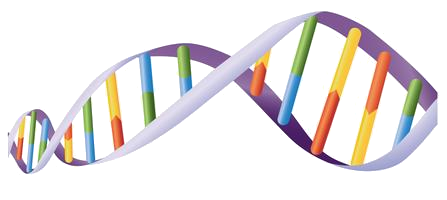 Science and technology
Science and technology


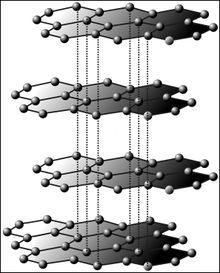
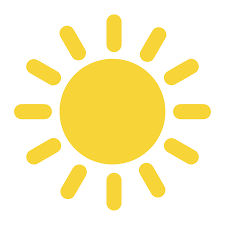 Energy resource
Energy resource
 Climate
Climate
 Animal world
Animal world